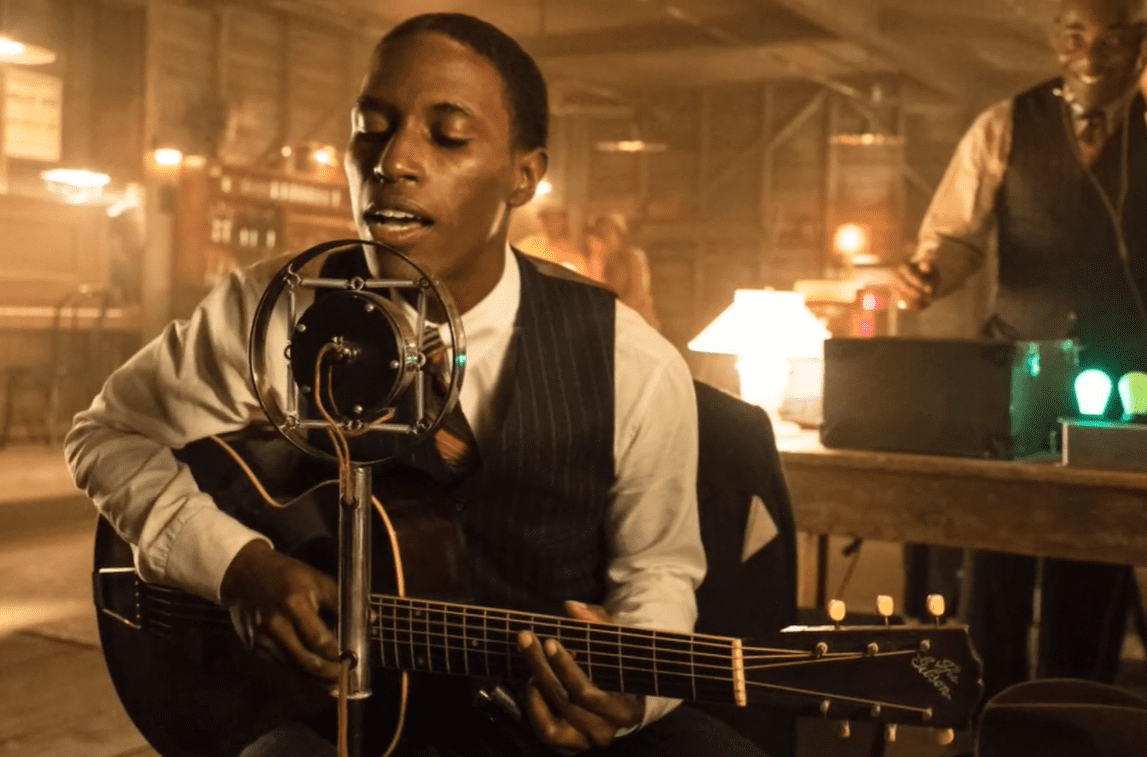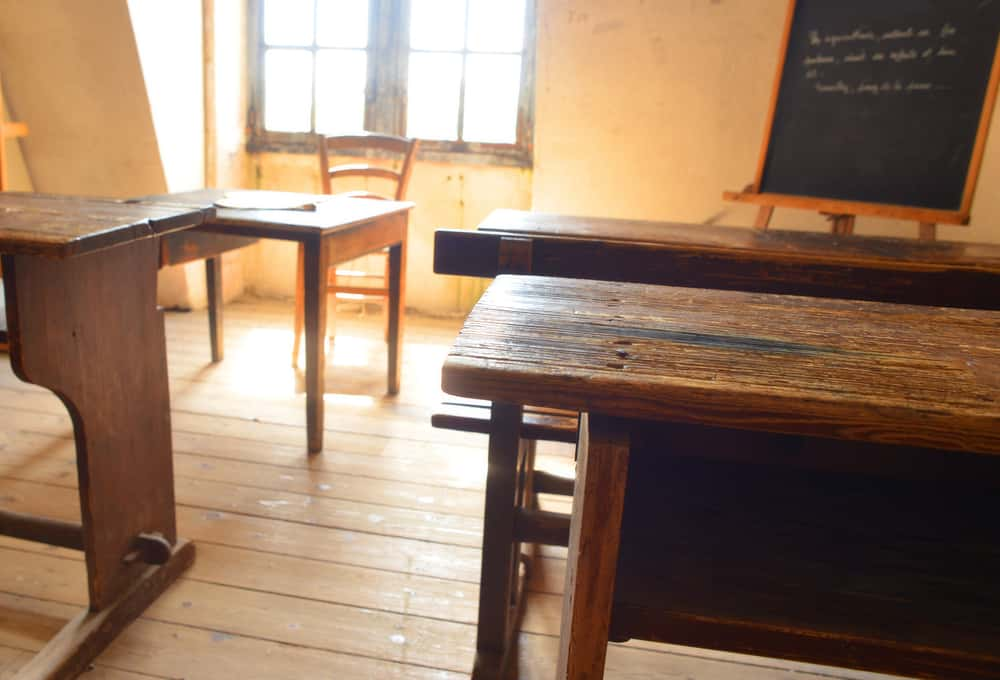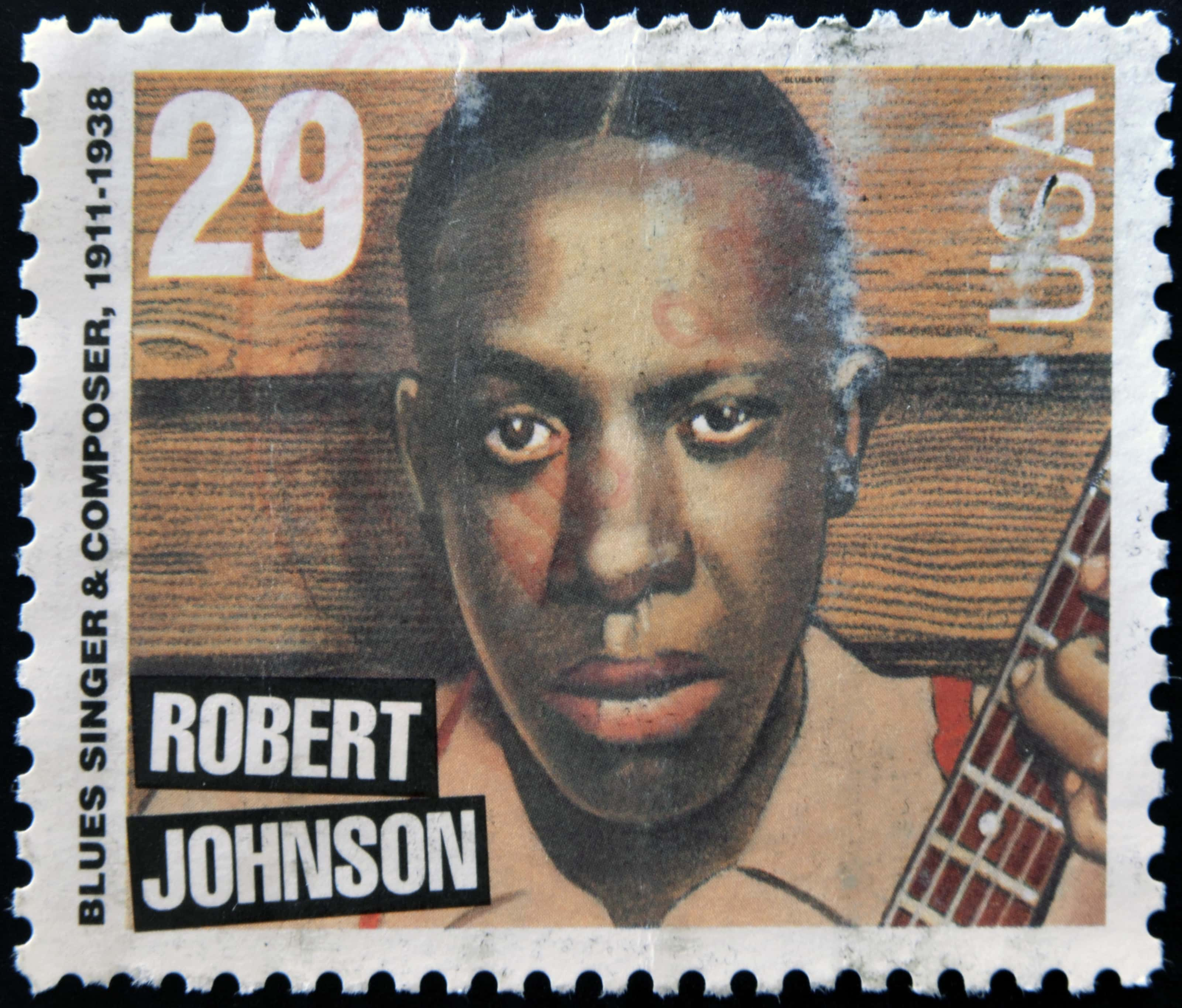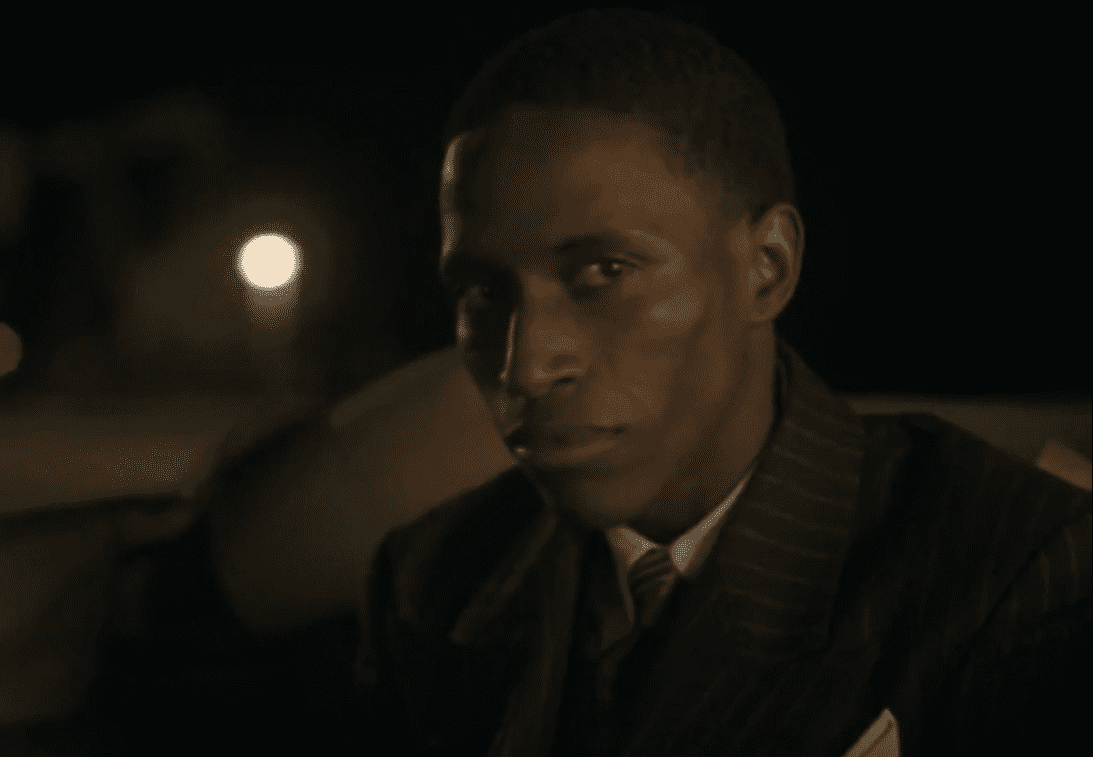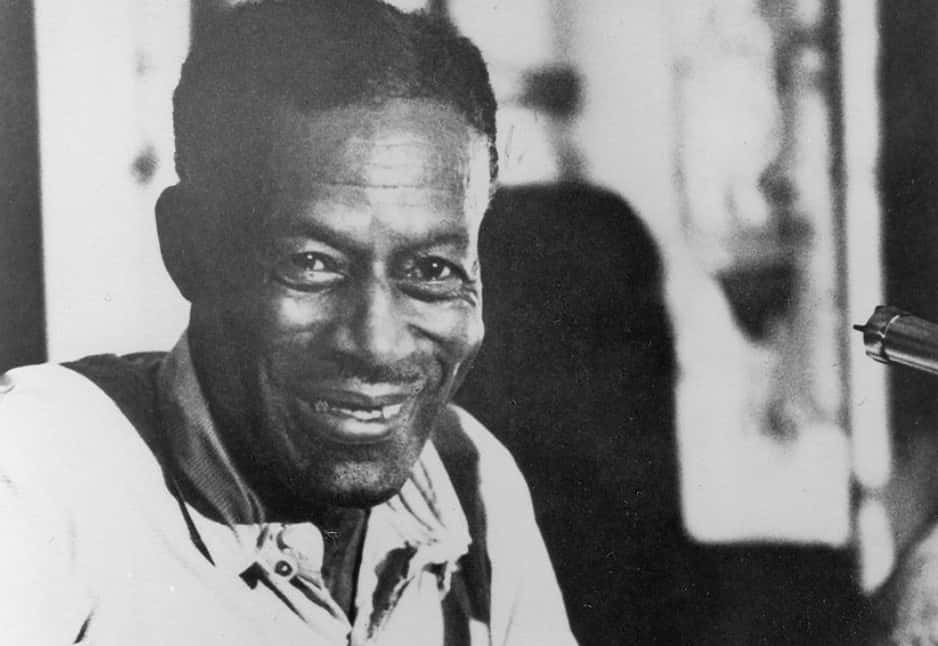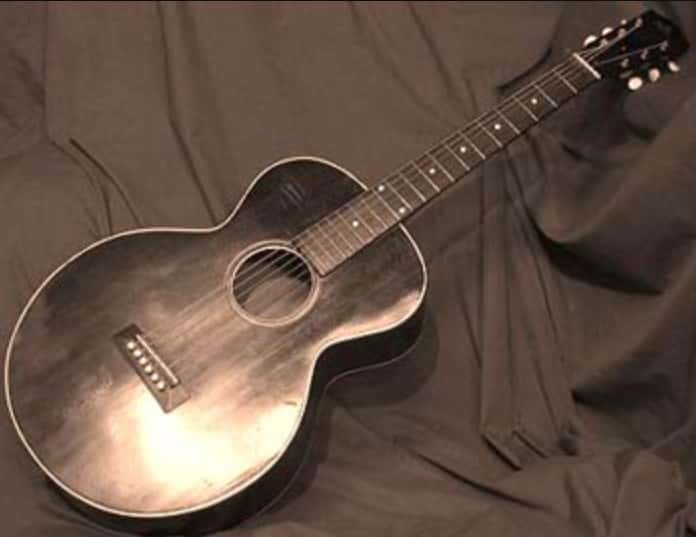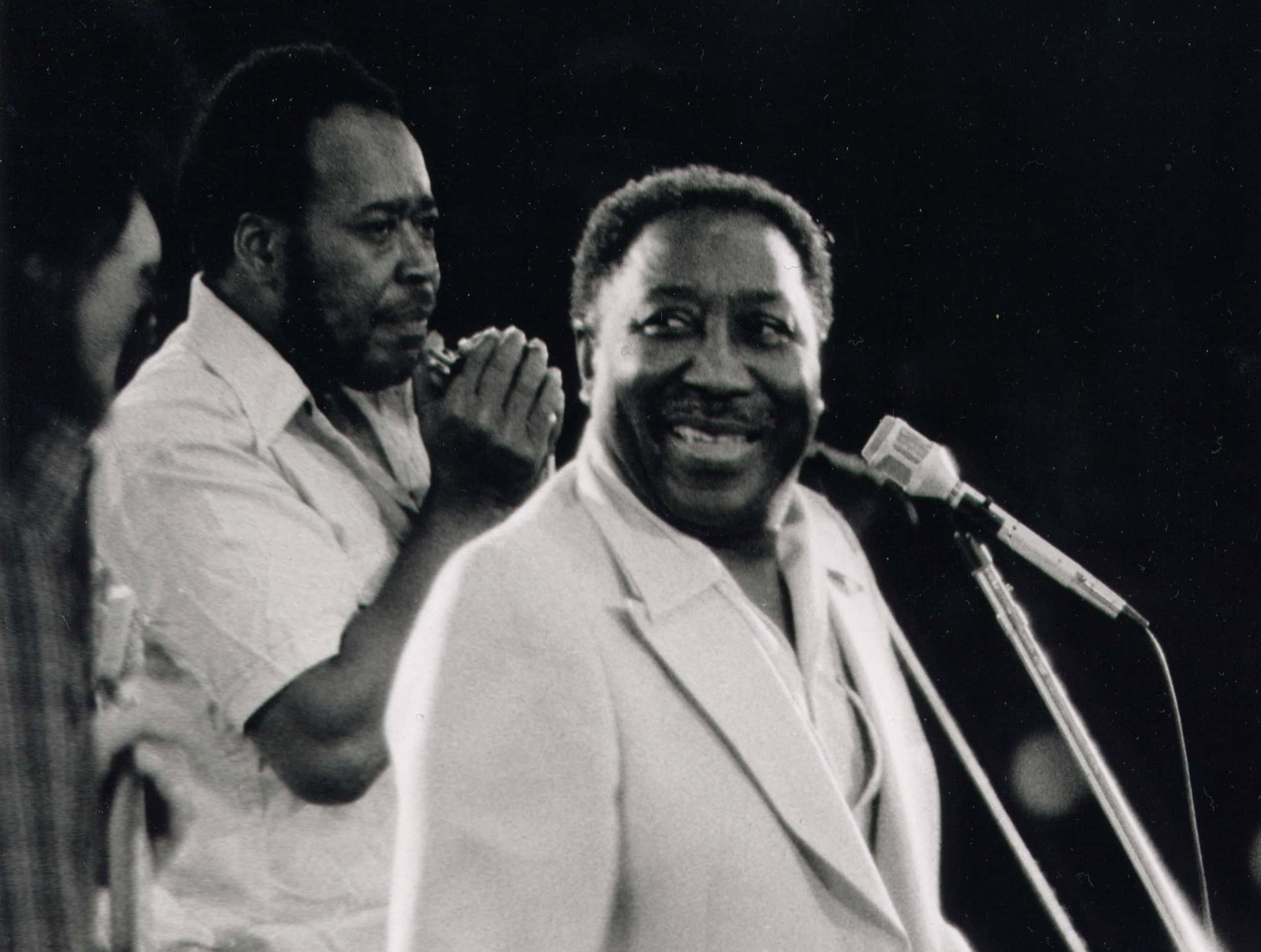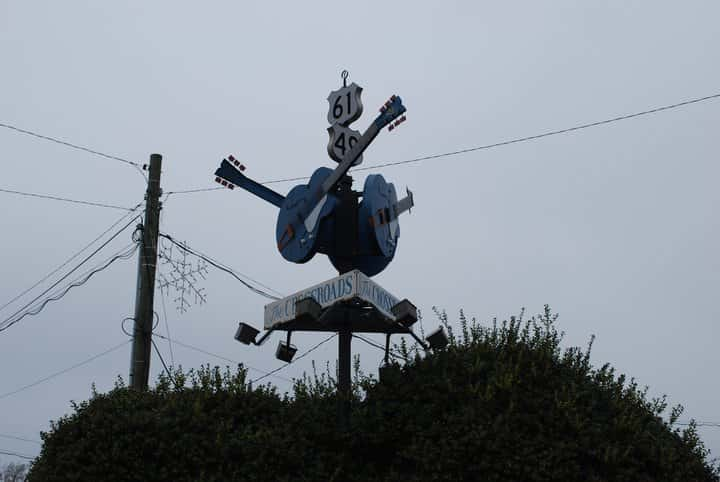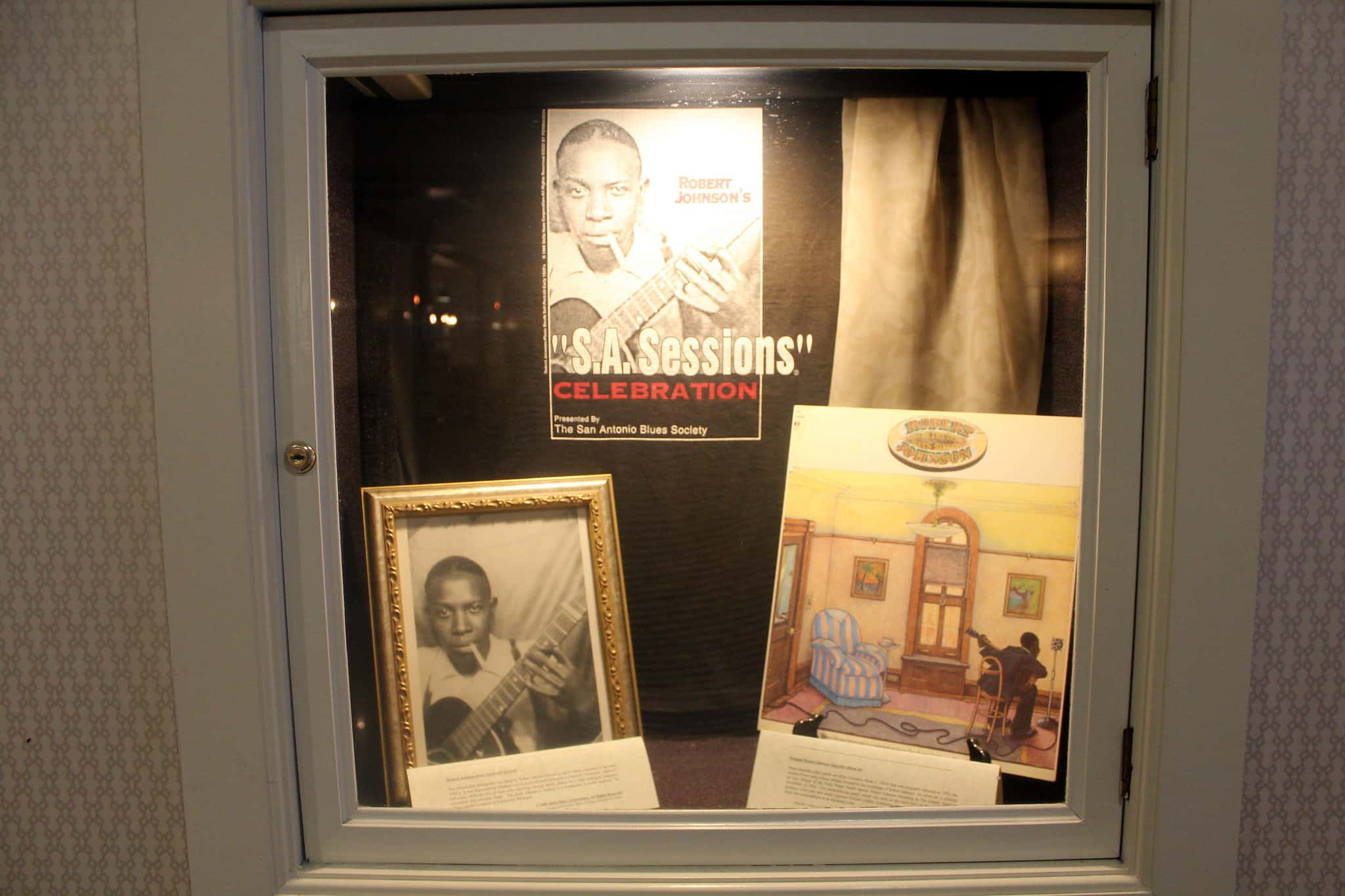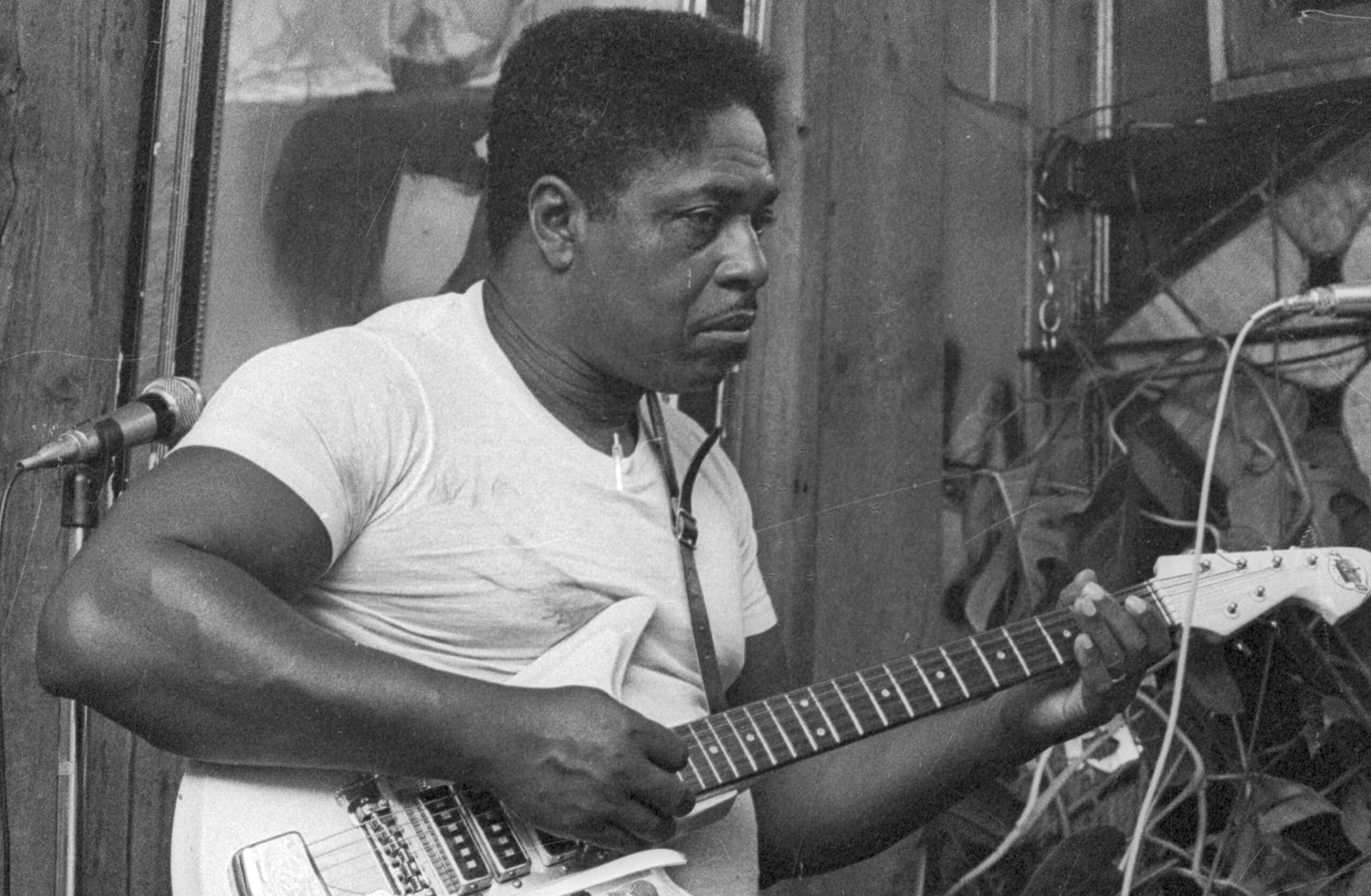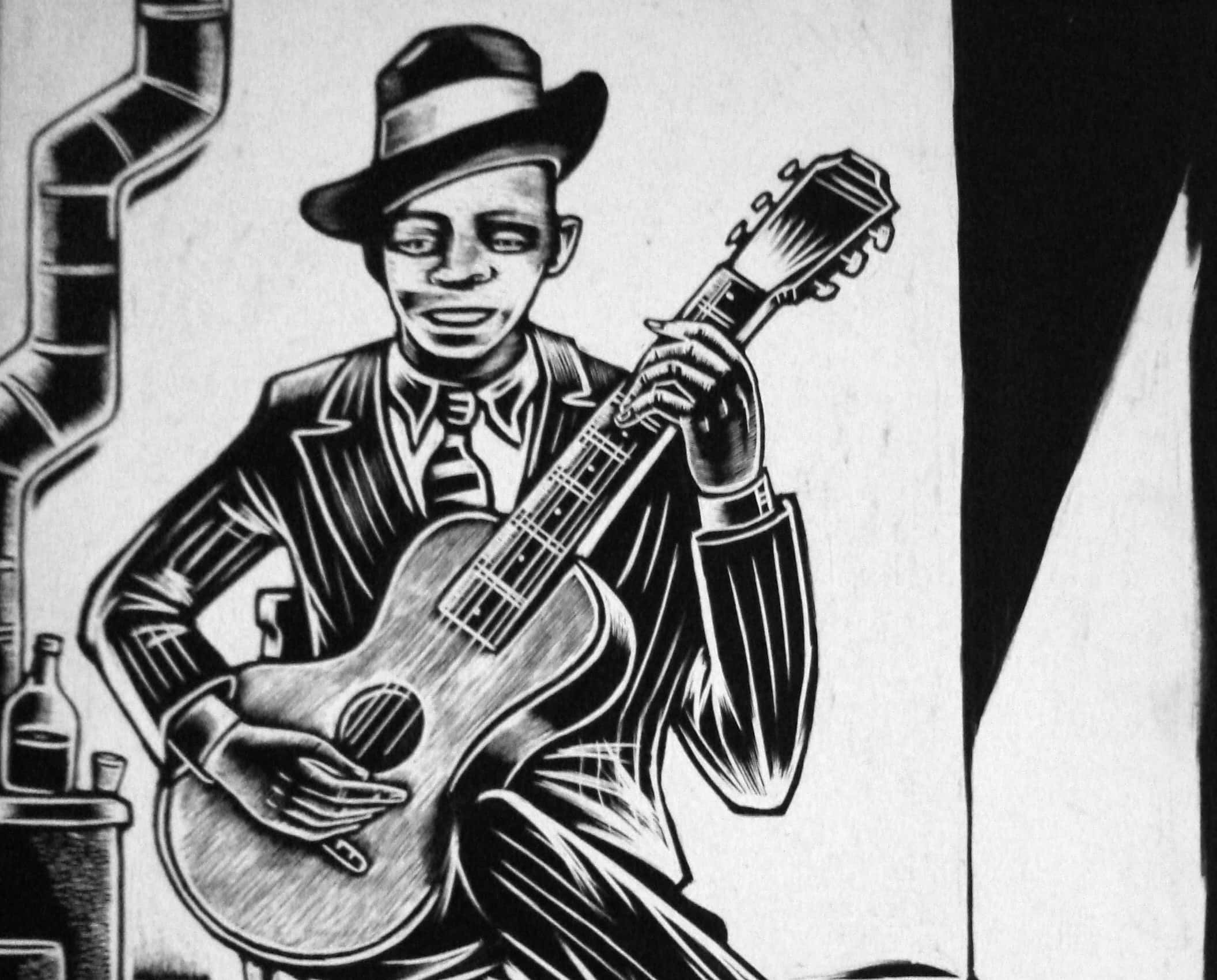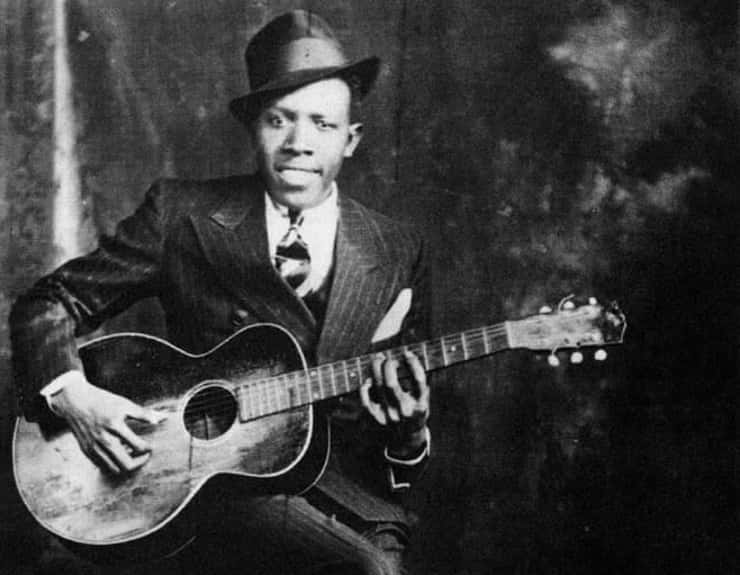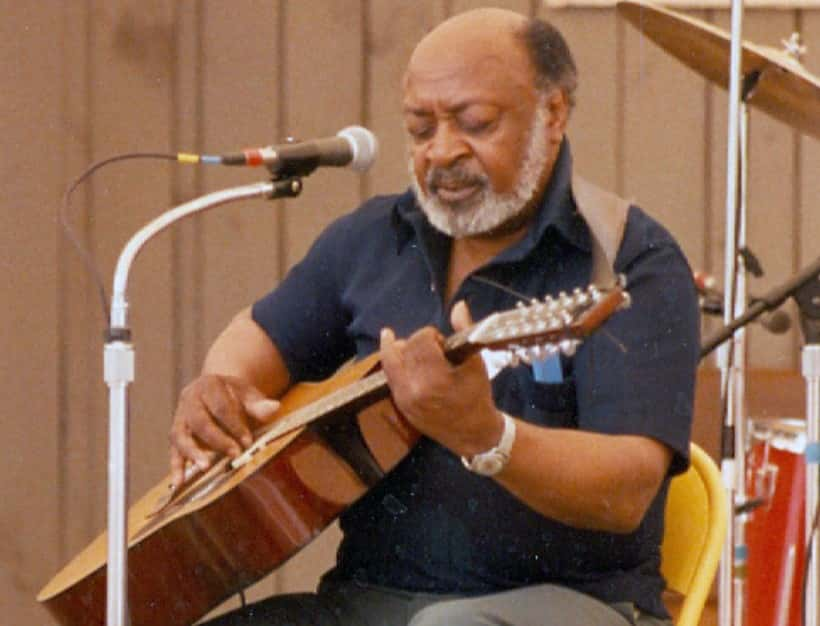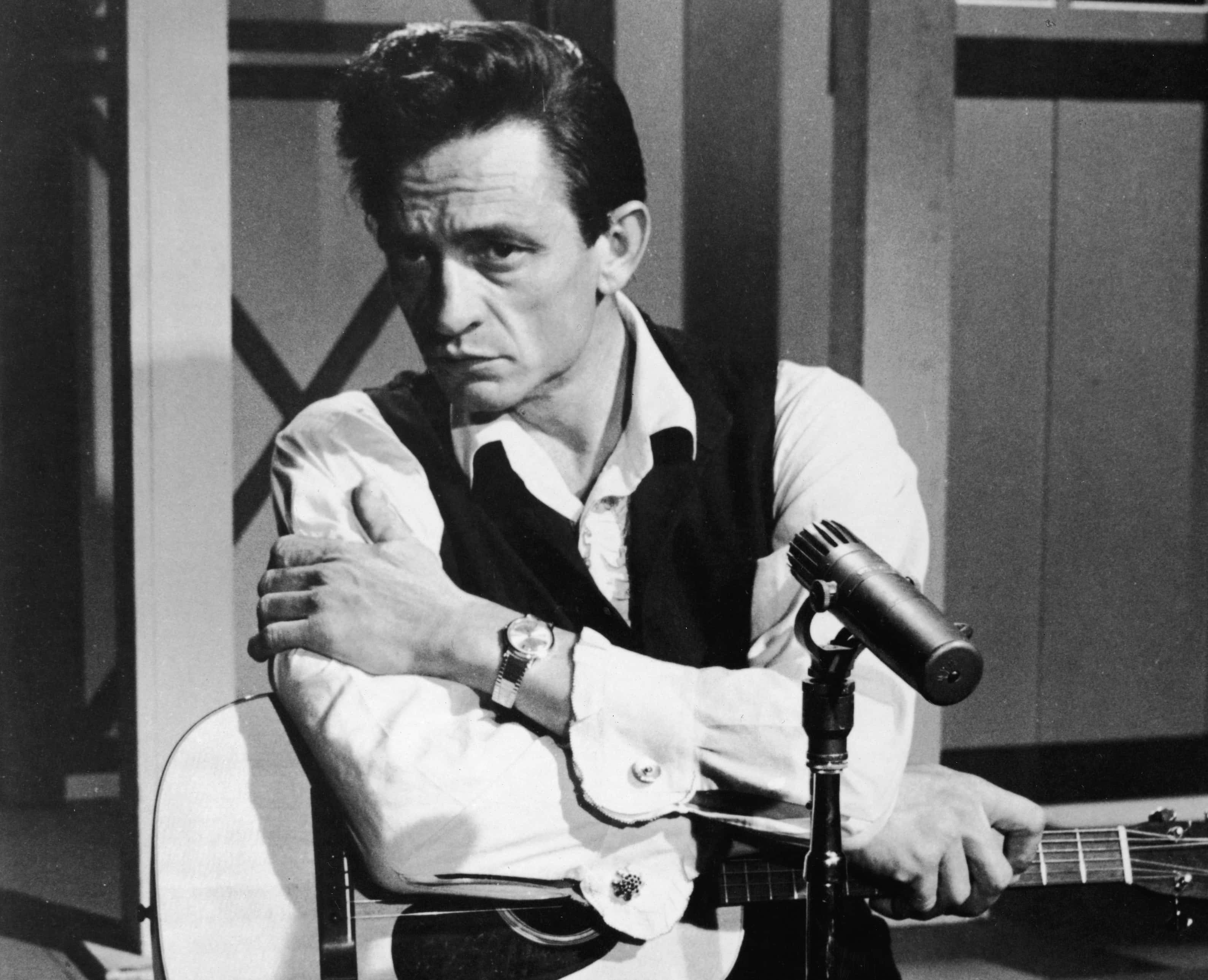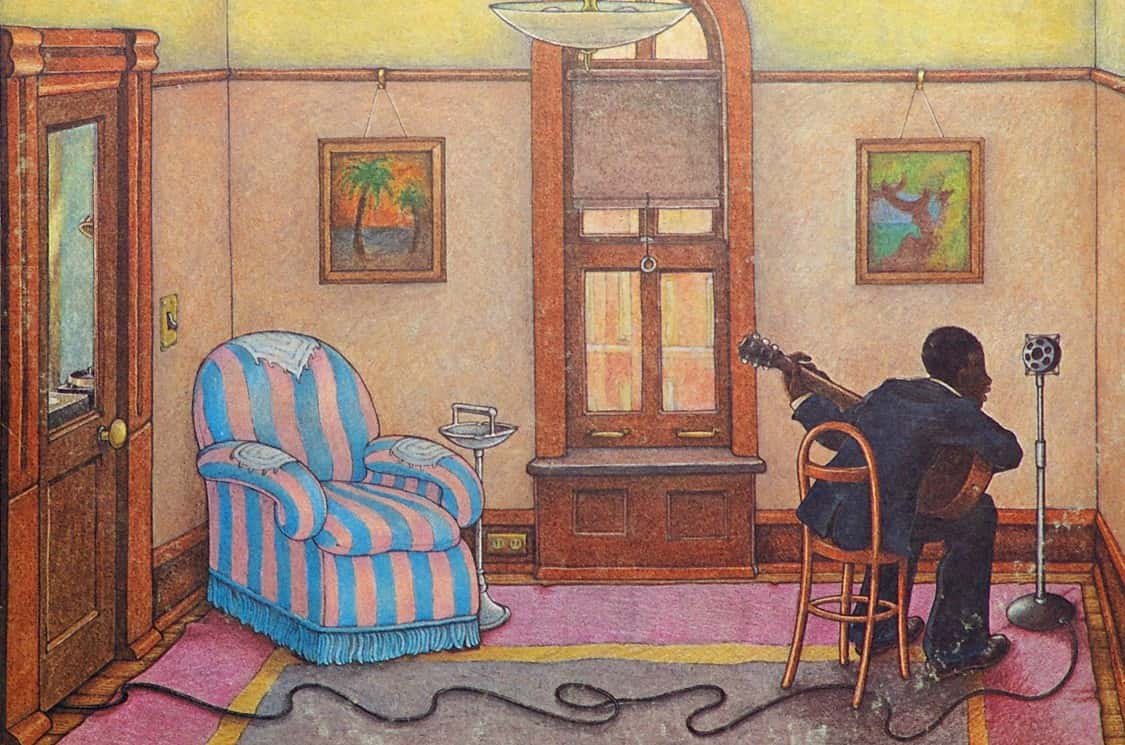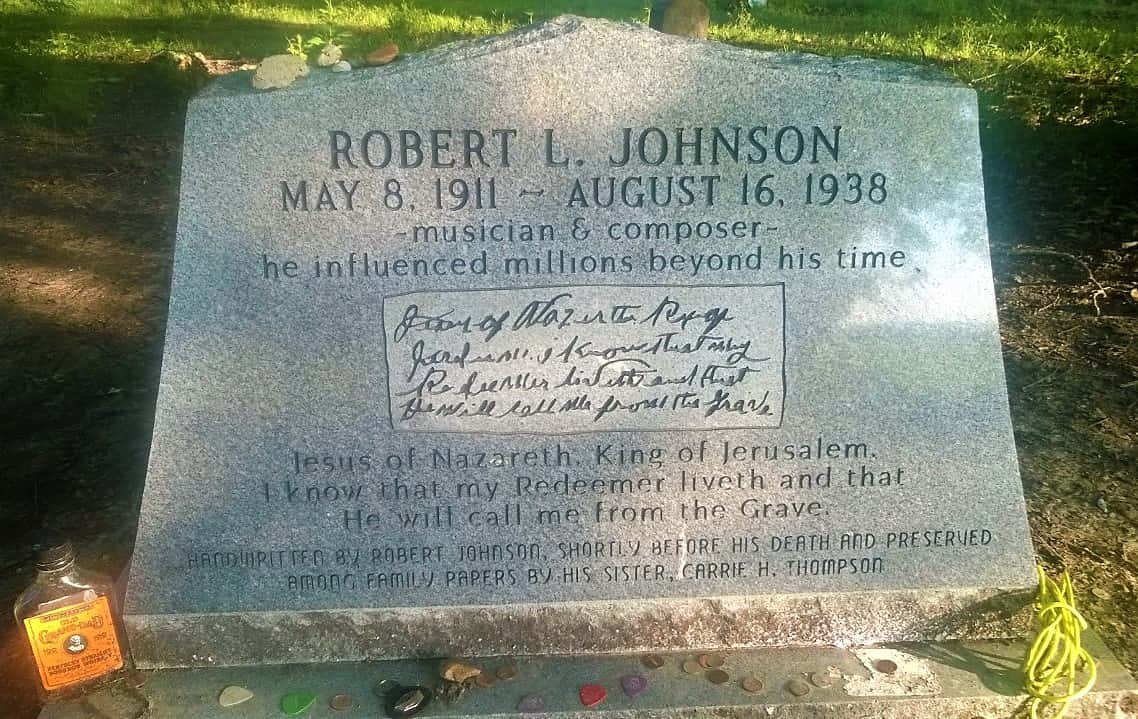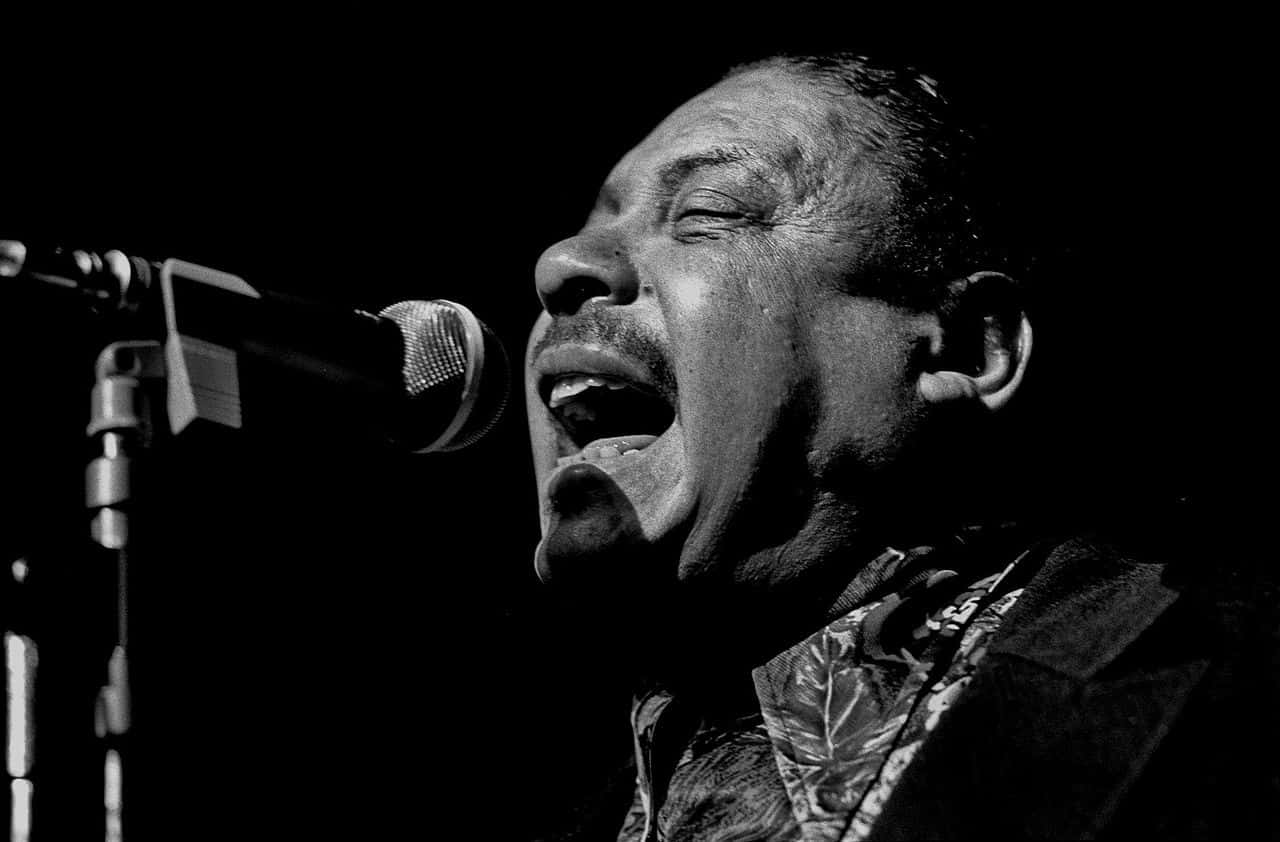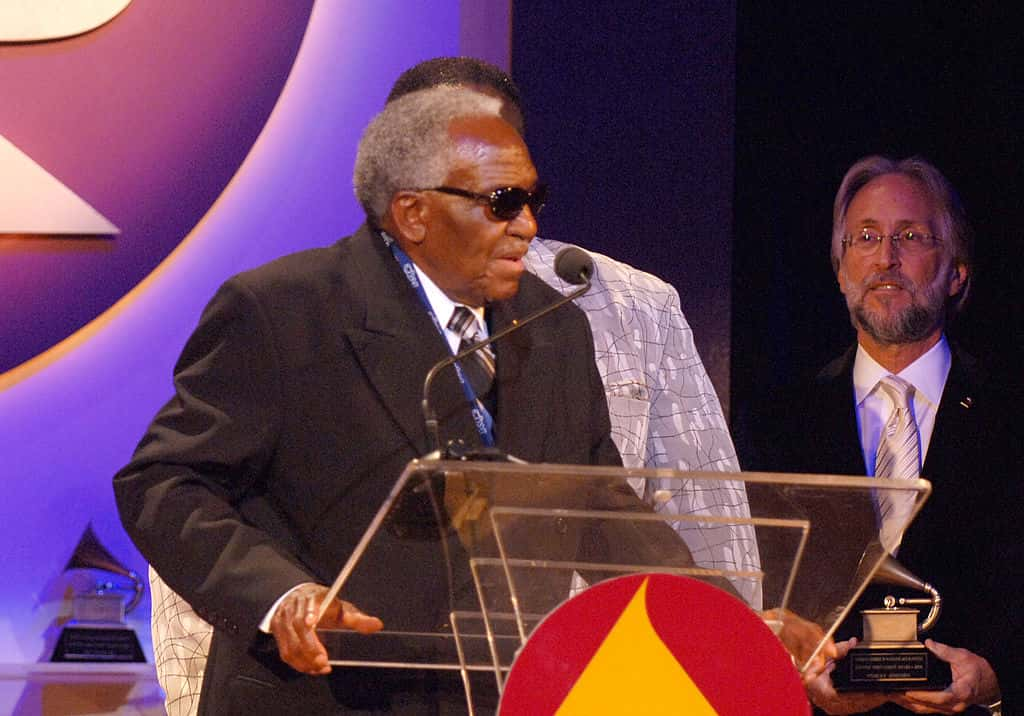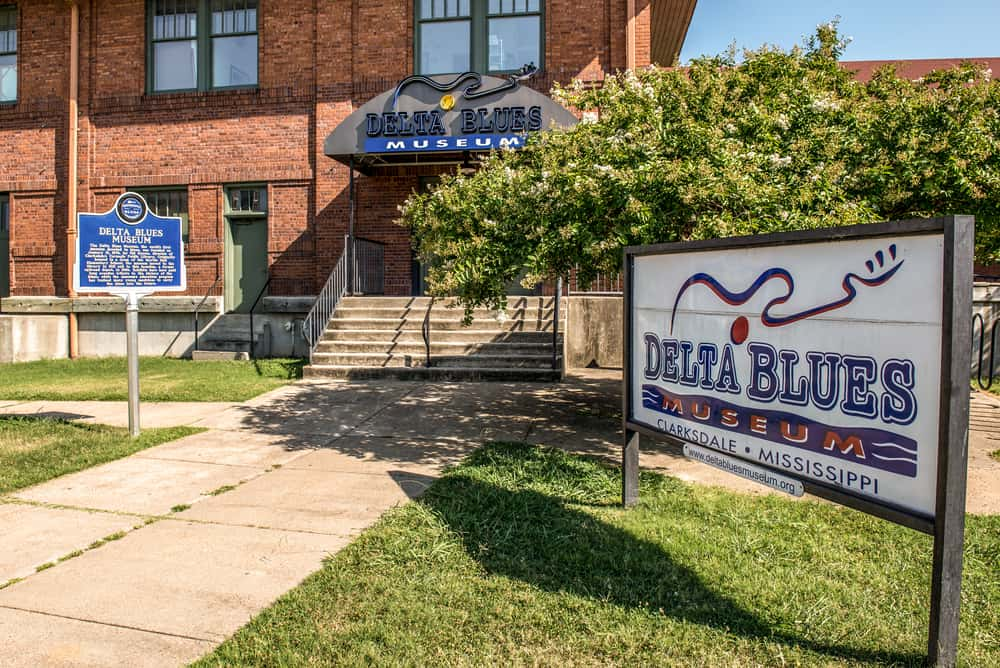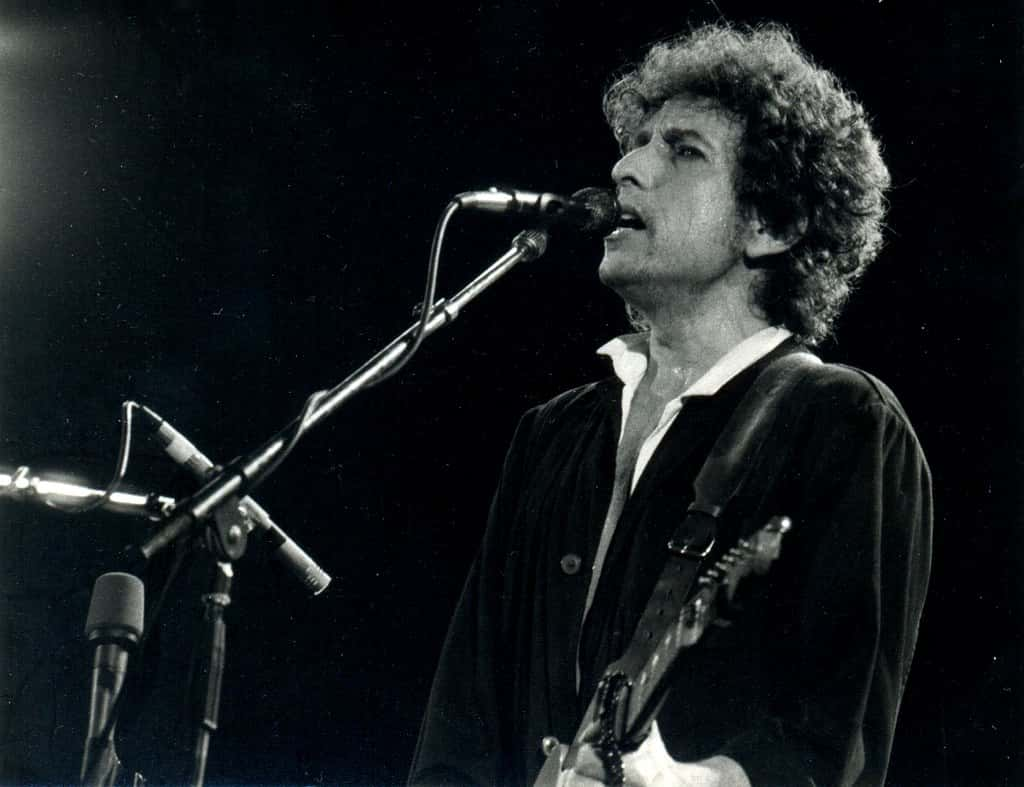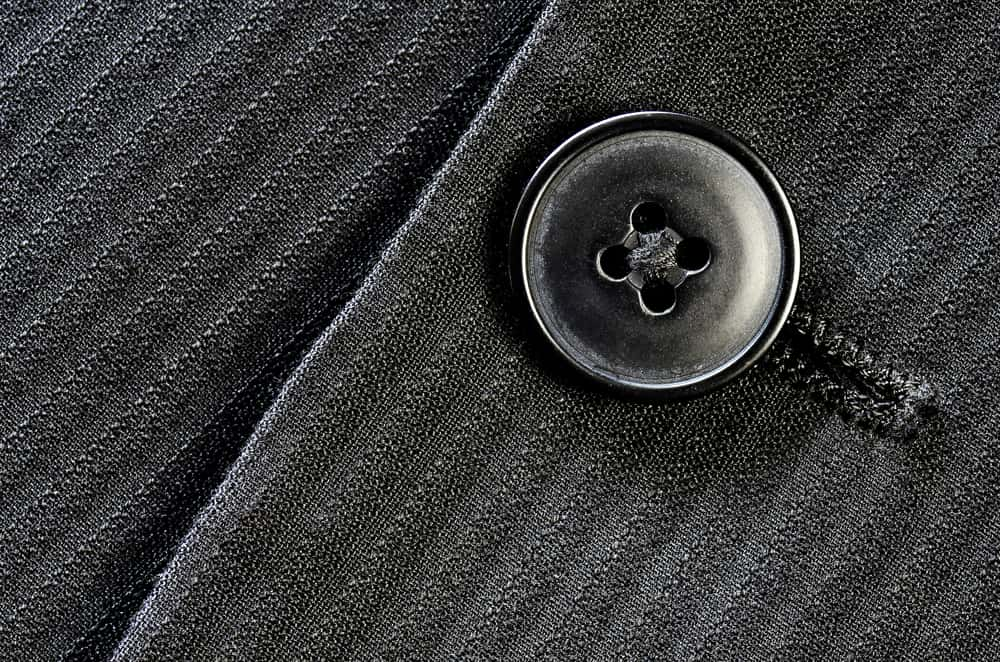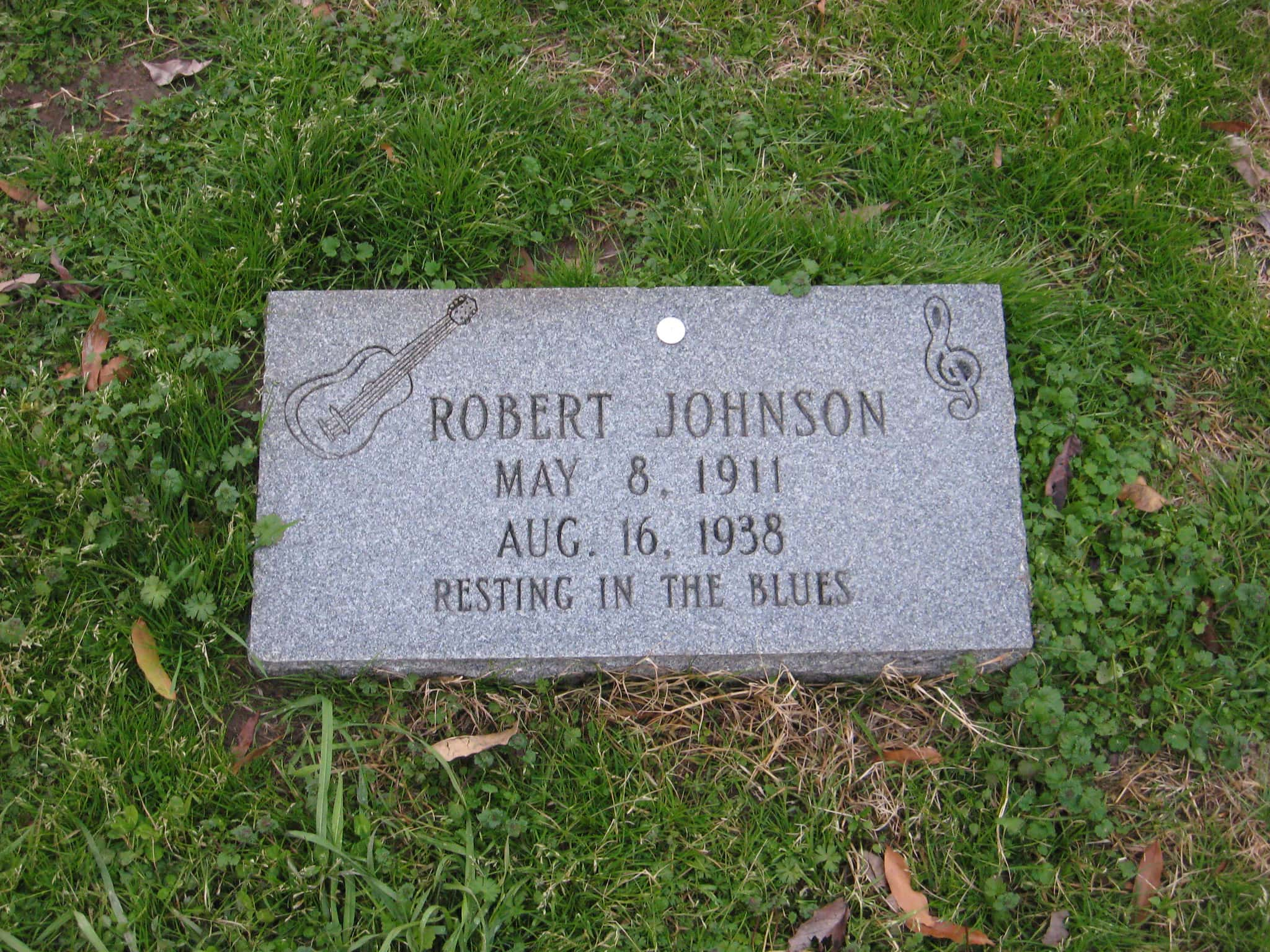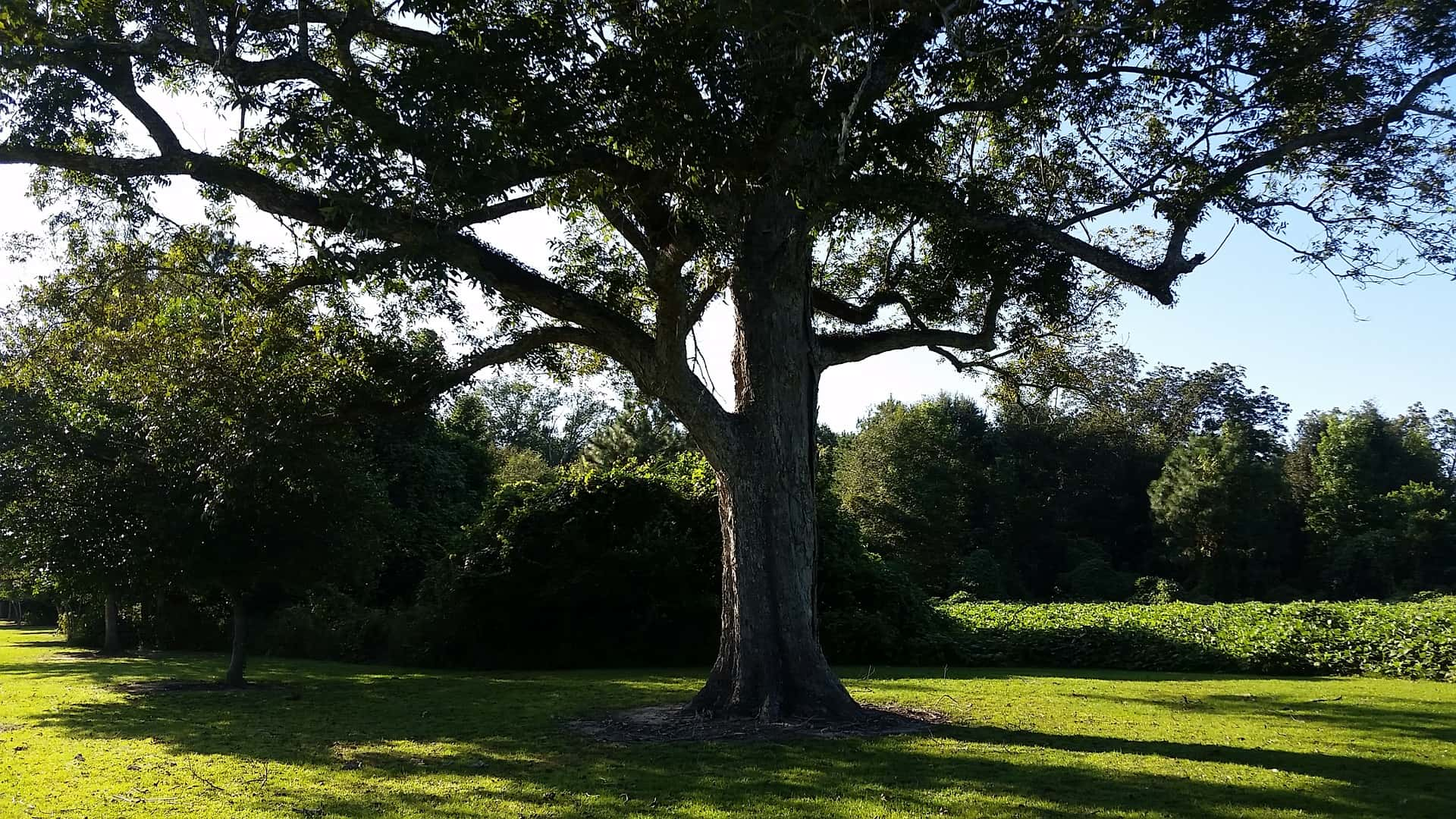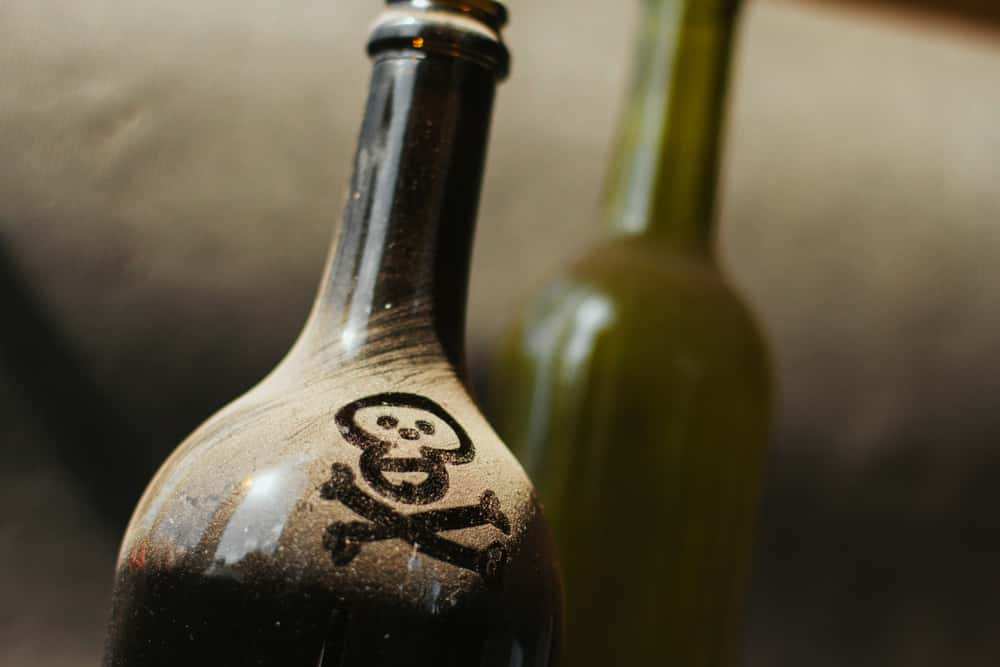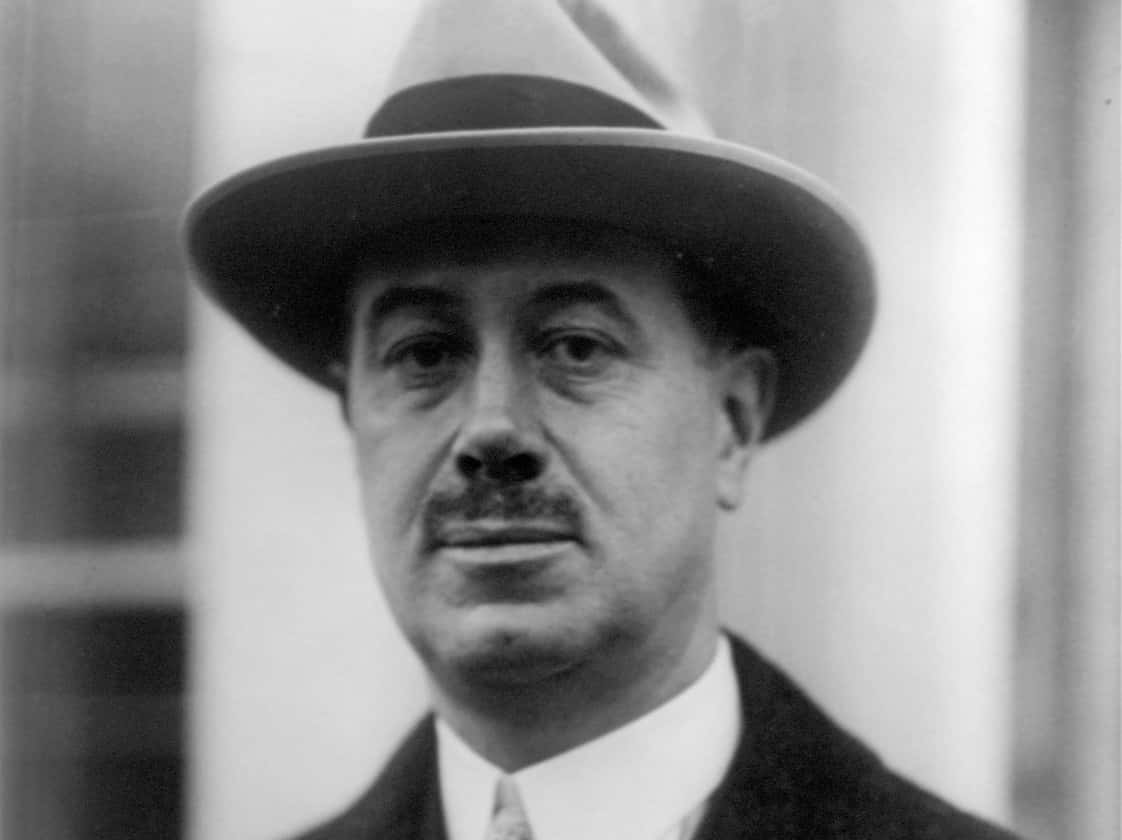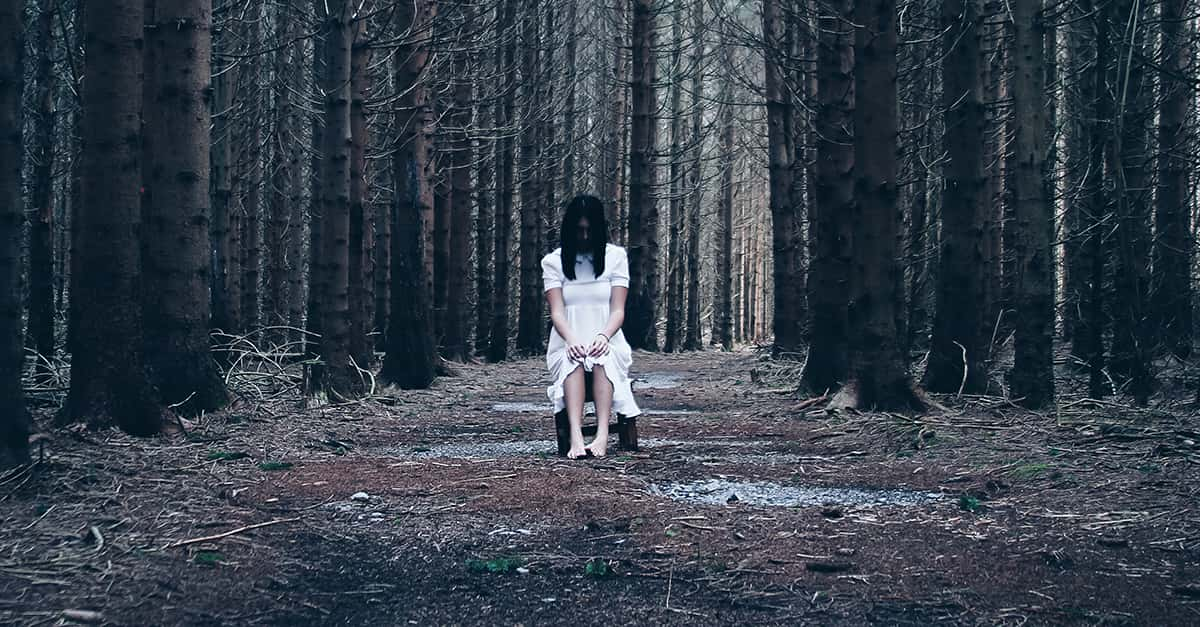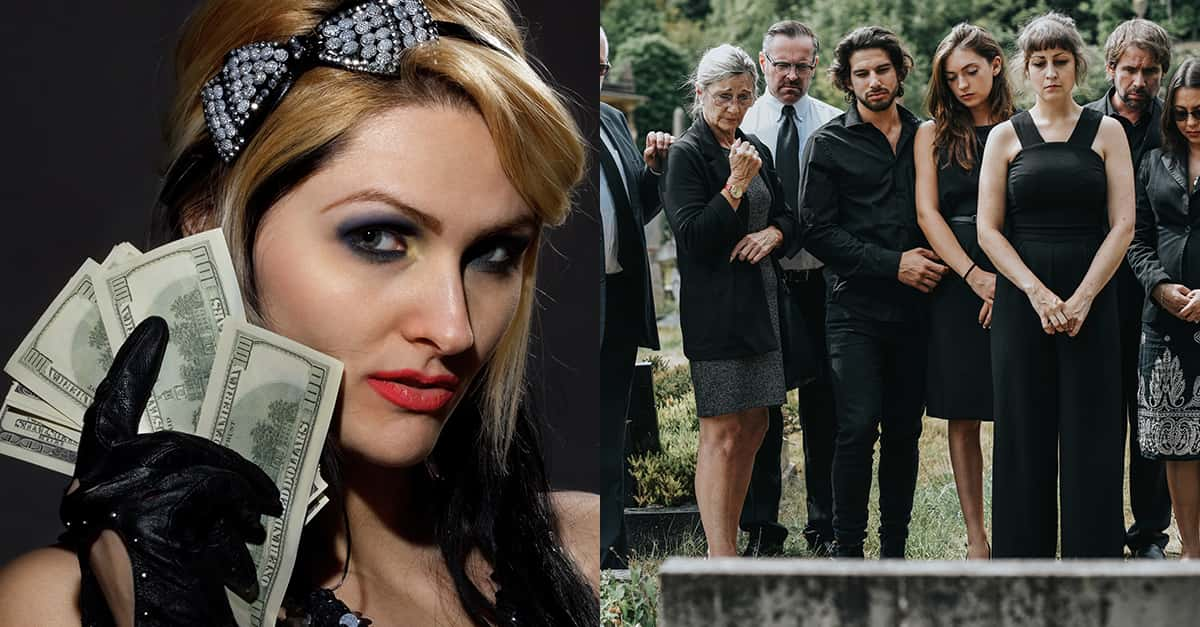The Man Who Sold His Soul To The Devil
Out of all the guitar players to travel the Depression-era Mississippi Delta, Robert Johnson was the most talented. He was also the most mysterious. A thrilling entertainer onstage, offstage, Johnson was somber and quiet; he seemed to be tending some private grief. Folks said Johnson owed his otherworldly talent to a deal with a Devil himself—but how could anyone without a soul play like that? Dive into the history of Robert Johnson and decide for yourself.
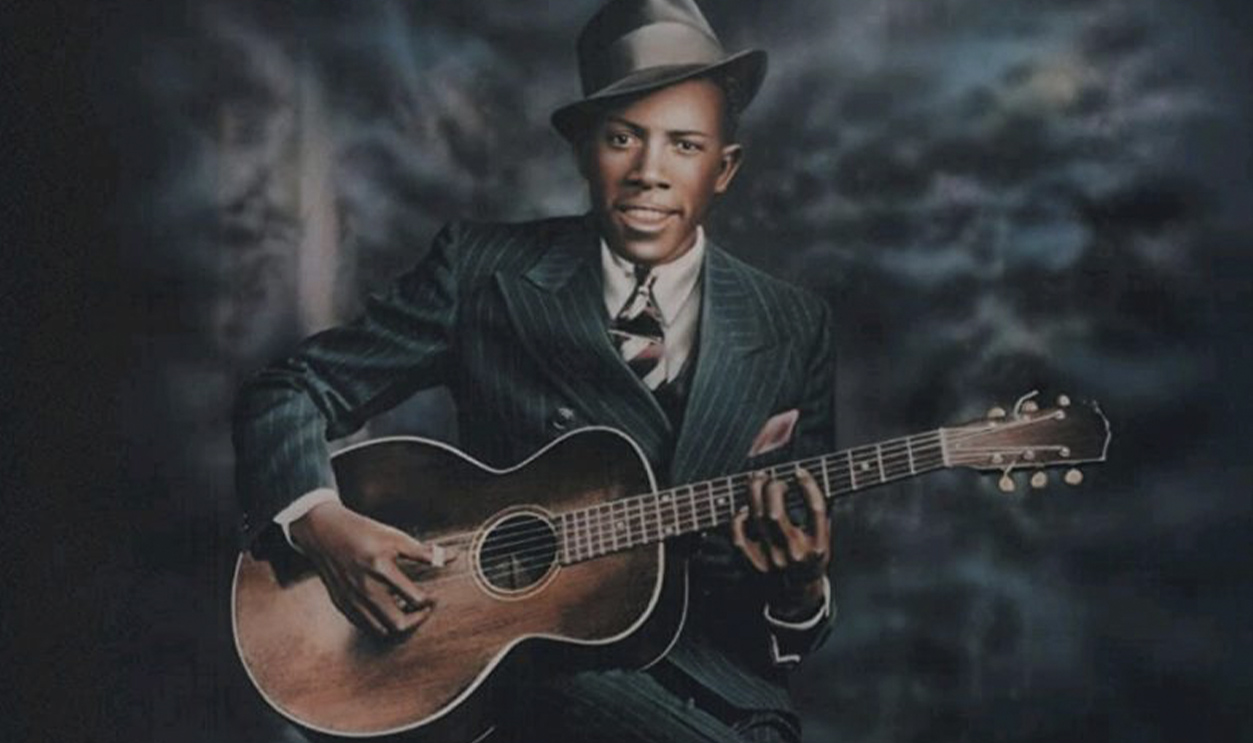
1. His Father's Identity Was A Mystery
Robert Johnson was born Robert Dodds sometime around May 8, 1911. The eleventh child born to Julia Dodds, Robert’s brothers and sisters had all been born from the marriage between Julia and Charles Dodds. However, Charles was not Robert's father. A lynch mob forced Charles to flee Mississippi and make refuge in Memphis, and Robert was born of an affair not long after. For years, the identity of his real father was a complete mystery to him.
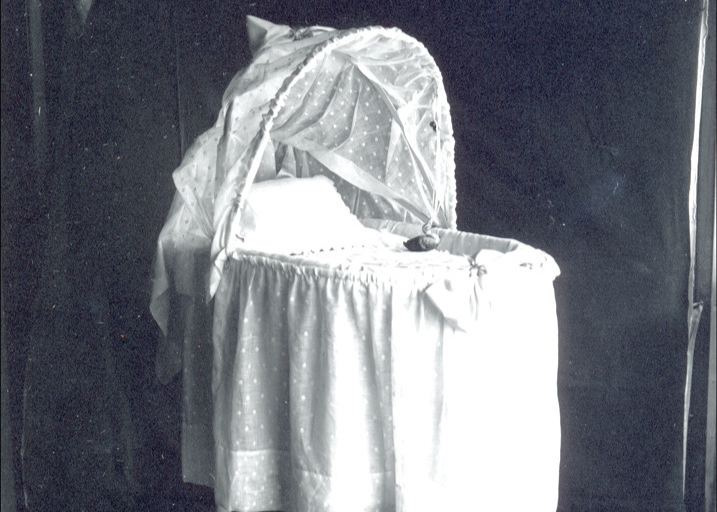 Keene and Cheshire County (NH) Historical Photos on Wikimedia
Keene and Cheshire County (NH) Historical Photos on Wikimedia
2. He Moved Around A Lot
Robert shuffled between Mississippi and Arkansas while his mother tried to find work in the Delta’s numerous cotton plantations, punctuated by brief visits to Memphis. His life finally settled down when his mother married a sharecropper named Dusty Willis. He moved the family to the Leatherman Plantation, near Commerce, Mississippi.
3. He Was Known By Many Names
Robert enrolled in the Commerce School under the name Robert Spencer (Spencer being the surname Charles Dodds adopted after he moved to Memphis). Most folks in Commerce knew, or at least suspected, however, that Charles was not Robert’s biological father. The locals took to calling him "Little Robert Dusty," after his stepfather—but he'd learn the truth eventually.
4. He Became A Johnson
Robert Dodds, aka Robert Spencer, aka Robert Dusty, was barely 13 years old and already had a laundry list of aliases. He ached for a name of his own. Robert was a teenager when he finally learned the true identity of his father—a sharecropper from Hazlehurst named Noah Johnson. With his true parentage finally revealed, he officially renamed himself Robert Johnson. Now it was time to start making sure people would know that name.
5. He Got Married Young
In 1929, the newly-minted Robert Johnson married a local girl named Virginia Travis. Virginia was just 16 years old at the time, but it wasn’t long before she was pregnant with the couple’s first child. Eager to give his young family the stable home he never had, Robert settled down and went to work on the Leatherman Plantation. It seemed like Robert Johnson would lead regular life—but fate had other plans.
6. His Love Life Was Cursed
Sadly, this life was not to be, and both mother and child were lost in childbirth. A second marriage, to Caletta Craft, proved just as short-lived and tragic. Caletta passed within a year of their union. After these losses, Johnson suffered tremendous grief and doubt. He began to believe he was cursed, destined to be alone, and he resolved to abandon normal family life forever.
7. He Relied On Music
In this tragic period, only one thing brought him any joy: Music. Johnson loved music, especially the raucous country blues that Charley Patton, Son House, and other older musicians played at Saturday night dance parties and juke joints. Johnson studied these masters and dreamed of one day escaping the Leatherman Farm. Little did he know, that day would come soon enough.
8. He Needed A LOT Of Practice
Johnson had already mastered the harmonica and the jaw harp, but he knew if he wanted to make it as a bluesman, he needed a guitar. Once he saved up enough to buy one of his own, Johnson begged the older musicians to let him play. While they were happy to share the stage with him, one problem remained—he sucked!
In one documentary, the legendary Son House recalled his audiences chastising him for letting Johnson play: "Folks they come and say, ‘Why don't you go out and make that boy put that thing down? He running us crazy,’ Finally he left. He run off from his mother and father and went over in Arkansas some place or other". Or at least, that's what they thought...
9. He Made A Comeback
One day, Johnson just disappeared. Most assumed he moved to Arkansas with his parents, or had gone to study in Memphis. The locals shrugged, and life went on without him. When he suddenly reappeared in Mississippi six months later, Johnson had changed. Was he taller? New clothes? A tattoo? No one could put a finger on it—but one thing was certain…
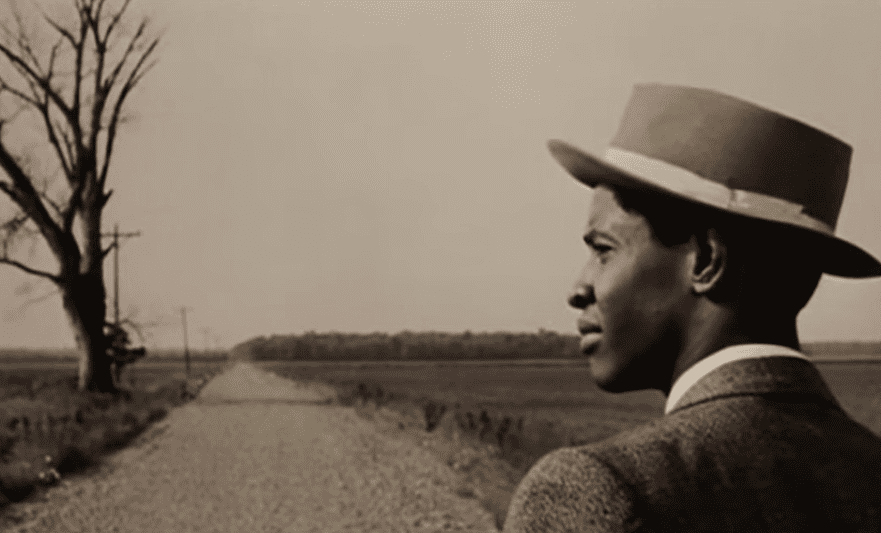 Crossroads (1986), Columbia Pictures
Crossroads (1986), Columbia Pictures
10. He Sparked Dark Rumors
Whatever changed, one thing was undeniable: Robert Johnson had become the best guitarist in all of Mississippi. He could play, and sing, better than anyone. Johnson’s sudden, mysterious transformation from annoying noisemaker to master bluesman sparked disturbing rumors—rumors that defined the legend of Robert Johnson forever.
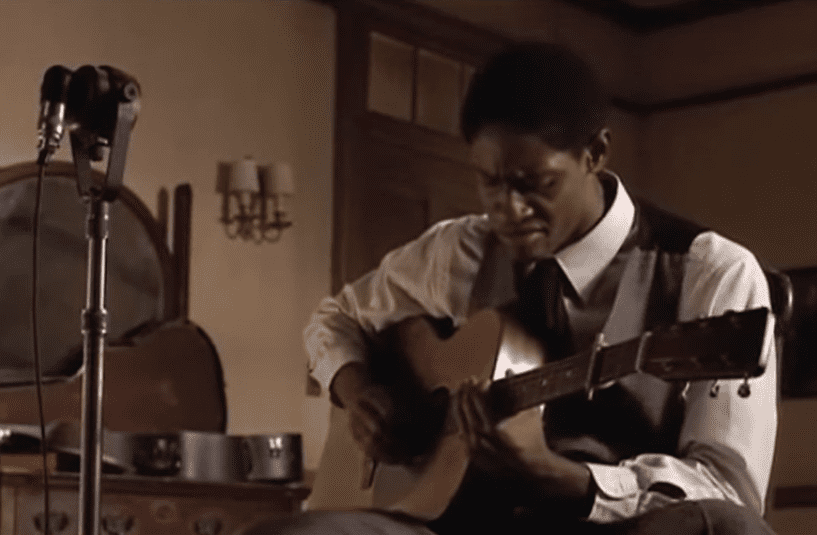 Crossroads (1986), Columbia Pictures
Crossroads (1986), Columbia Pictures
11. He Had Famous Fans
Those who witnessed Johnson’s transformation included a young man named McKinley Morganfield. Morganfield grew up on the Stovall Plantation near Clarksdale, Mississippi, where Johnson performed frequently. Johnson’s vivid performances inspired him to play the blues himself, and McKinley Morganfield became none other than Muddy Waters.
12. He Sold His Soul At The Crossroads
Johnson’s sudden transformation caused the locals to speculate. Delta folklore held that, at midnight, at the crossroads of Highways 61 and 49, you could sell your soul in exchange for fame and fortune. Had Johnson done it? What else could explain his gift? A pact with the devil made Johnson very dangerous…and very exciting.
13. He Never Denied The Rumors
In reality, Johnson probably learned to play from Ike Zimmerman, an Arkansas bluesman who was similarly said to have gained his skills by supernatural means. Johnson knew better than to let the truth get in the way of a good story, however. He never denied the rumors, and even played them up with songs like "Cross Road Blues".
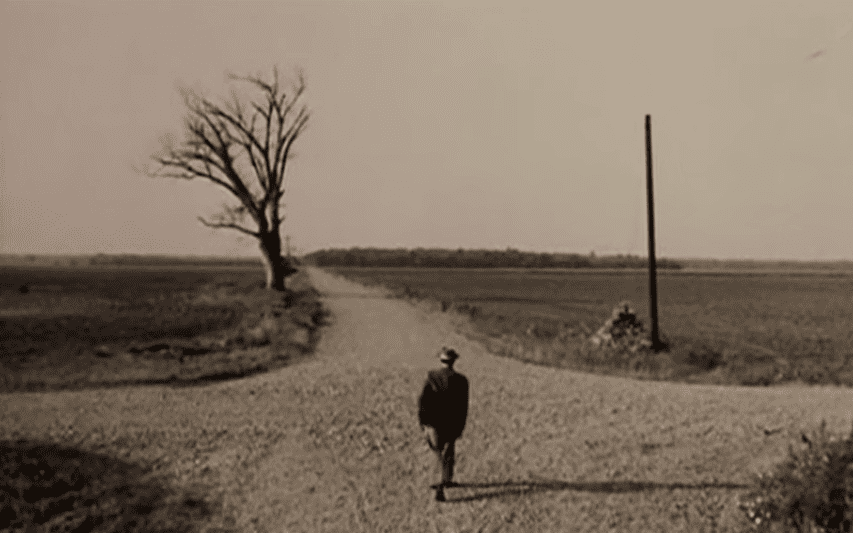 Crossroads (1986), Columbia Pictures
Crossroads (1986), Columbia Pictures
14. He Sampled Other Artists
Johnson had a repertoire of popular songs for entertaining, but he also wrote his own material. Per blues custom, many of his songs were based on pre-existing tunes. "Come on in My Kitchen" has a clear antecedent in "Sitting on Top of the World," for instance, while "Dust My Broom" borrows from "I Believe I’ll Make a Change". But no one who'd come before him did it quite like Robert Johnson.
15. He Was A Storyteller
Certainly, any blues musician already strayed toward the dark side, and folks considered his tragically short-lived marriages proof that something had gone wrong between Robert Johnson and God. The signs were already there, but Johnson’s own compositions provided fuel to the rumors of his deal with the devil. Johnson’s songs took familiar music and set it to his own grim narrative.
Collectively, "Cross Road Blues," "Me and the Devil Blues," and "Hellhound on my Trail" tell the story of a man who befriends the devil and is now pursued by demons at every step. Further songs like "If I Had Possession Over Judgement Day" signaled a grim fate for the singer.
16. He Was In Good Company
Johnson was not the first musician to strike such a Faustian bargain. Another blues guitarist, the similarly named Tommy Johnson, had already claimed to have done the deed, and it seems likely that Robert Johnson lifted the story from him. But legends of soul-selling in exchange for talent go back even further than that.
The 18th-century violinist Niccolo Paganini gleefully cooperated with a rumor that he sold his sold to the devil, as did his contemporary, French composer Phillipe Musard. Even as far back as the 11th century, the Icelandic author of the Poetic Edda, Sæmundr the Learned, claimed that Satan had helped him in his composition.
17. He Was Running From Something
Now that he was the best guitarist, the best singer, and the best showman in Mississippi, Johnson was finally good enough to make a living as a traveling musician. With another blues guitarist named Johnny Shines, Johnson performed all over the United States and even into Canada, picking up friends, fans, and girlfriends along the way. But everywhere he went, the same dark whispers followed him...
18. There Was A Devil In Him
Throughout all his travels, Robert Johnson always heard the same thing: "There goes that Robert Johnson who sold his soul to the devil". For his part, he managed to live up to his dark reputation. According to Shines, Johnson was friendly and loved to entertain, but he could also be moody. He drank too much, and sometimes disappeared in the middle of the night, not reappearing for weeks at a time. Eventually, all this hard-living would catch up to him.
19. He Was A Ladies’ Man
Johnson had another powerful thirst: Women. As he traveled from town to town, he established a whole network of steady girlfriends throughout the South. Some of these relationships were regular as marriages. Some of these women were already married. Johnson’s lack of restraint in this regard would come back to bite him, hard.
20. He Was A Mentor
Estella Coleman, a divorcee 15 years Johnson’s senior, was one of his longest-standing "girlfriends". Their relationship lasted nearly ten years; Johnson even lived with her for a time at her home in Turkey Scratch, Arkansas. Lockwood had a teenage son, who was himself an aspiring blues guitarist. Johnson took the young man under his wing and even gave him his name.
"Robert Junior" Lockwood went on to become a legendary guitarist in his own right, performing as a sideman to acts like Sonny Boy Williamson II, Elmore James, and Little Walter. Until his passing in 2006, Lockwood served as Johnson’s torchbearer and last surviving student.
21. Without Him, There Might Not Be A Johnny Cash
By 1936, Johnson was ready to take the next step in his career: Recording. Through a shop owner named H.C. Speir, Johnson met Don Law, a bookkeeper-turned-producer for Brunswick Records. Then just beginning his career, Law would go on to work at Columbia Records, producing for country artists like Johnny Cash and Marty Robbins.
22. He Set The Record Straight
Johnson traveled to San Antonio, Texas, where Law had set up a makeshift recording studio in his hotel room. Over the course of three days, Johnson recorded 16 songs, including "I Believe I’ll Dust My Broom," "Cross Road Blues" and "Sweet Home Chicago," three songs which would become standards in any blues repertoire. But Johnson was just getting started.
23. He Was A Hitmaker
Johnson’s songs were released under various small labels like Vocalion, Conqueror, and Perfect. Of Johnson’s San Antonio recordings, "Terraplane Blues" was the closest thing to a hit, selling 5,000 copies throughout the south. The success of "Terraplane Blues" was enough to necessitate a second recording session. Johnson's star was on the rise—but it was going to burn out all too soon.
24. His Second Session Was An Even Bigger Success
The following summer, Johnson met up with Law in Dallas. Johnson recorded 13 more songs, as well as alternate versions of most of them. Once again, several of the songs would become blues classics, including "Love in Vain" and "Milkcow’s Calf Blues". The Dallas recordings brought Johnson’s total catalog to 29 songs. It should have been just the beginning of an enormous collection—but devil or no, Robert Johnson's days were numbered.
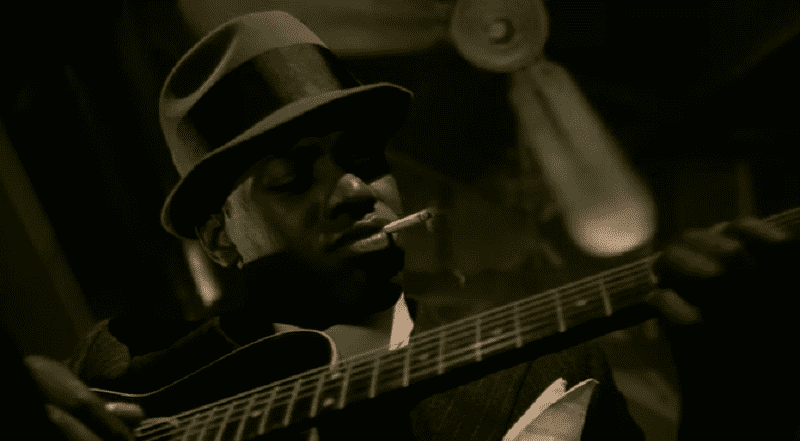 Supernatural (2005-2020), The CW
Supernatural (2005-2020), The CW
25. He Had Hounds On His Trail
One song in particular from the Dallas recording sessions stands out. "Hellhound on my Trail," released under the Vocalion label, became Johnson’s signature song. NPR named it one of the 100 most influential songs of 20th-century American music, and the song earned its own induction into the Blues Foundation’s Hall of Fame.
Johnson wrote "Hellhound on my Trail" from the perspective of a heartsick man pursued by his demons. Adapted from earlier songs like Sylvester Weaver’s "Devil’s Blues," and "Howling Wolf Blues" by Funny Paper Smith, "Hellhound on my Trail" further emphasized Johnson’s persona as a haunted man who had sold his soul to the devil.
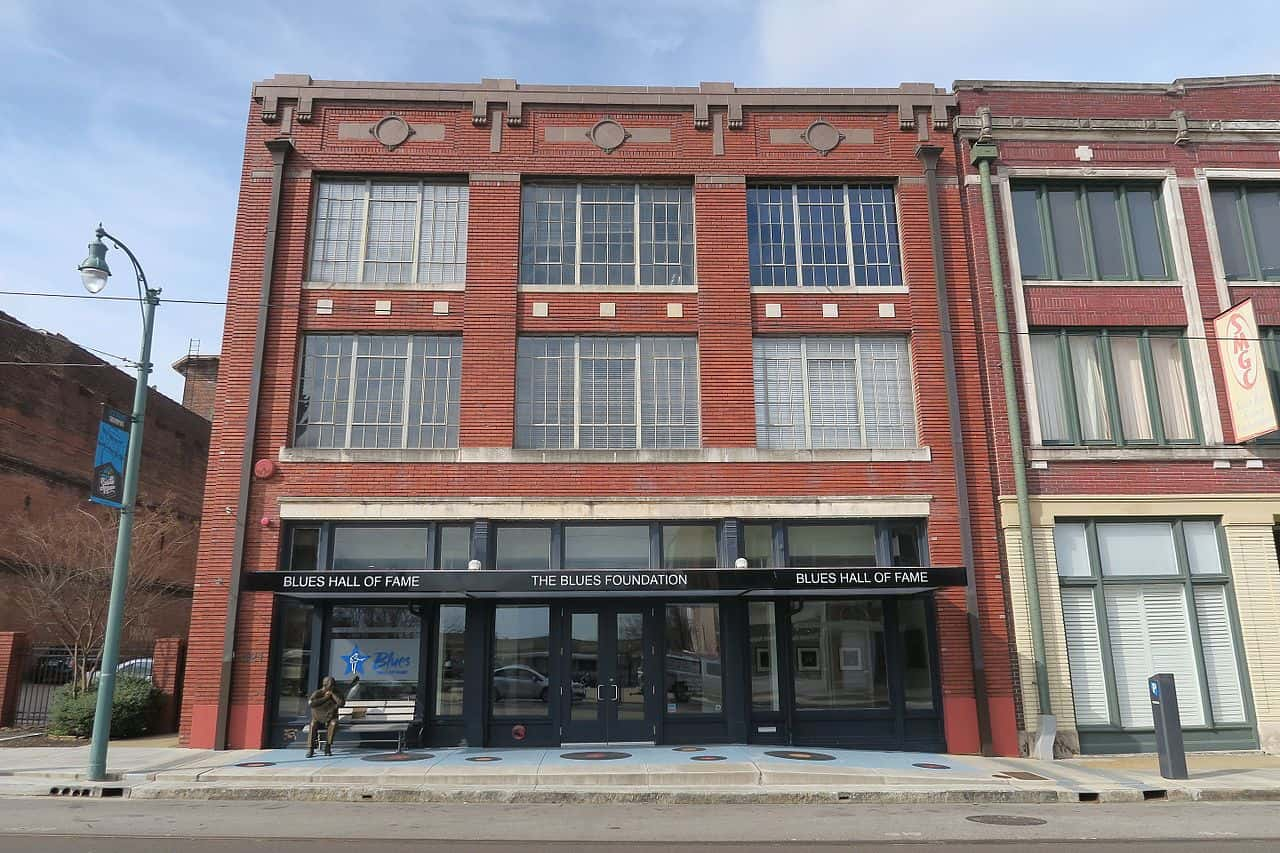 Wikimedia Commons, John Phelan
Wikimedia Commons, John Phelan
26. You Have To Slow Down
Johnson’s recordings have remained influential over the years, but in 2010, musicologists made a stunning revelation: We've been listening to Johnson’s music all wrong. These musicologists claim that producers sped up Johnson’s records by as much as 20%. Audiences would have heard a much lower, slower version of Johnson’s songs.
Producers frequently sped up blues records in the 20s and 30s in an attempt to make the often quiet, somber music sound more energetic and exciting. We will never know if Johnson’s records were sped up intentionally, but we have to admit listening to Johnson’s songs at the right speed reveals a whole new emotional dimension.
27. His Life Was Cut Short
Johnson’s career was just taking off when suddenly it came to a screeching halt. Speculation and rumor surround the event, but this much is certain: On August 15, 1938, Johnson performed at a barn dance outside Greenwood, Mississippi. Three days later, his body was found on the side of the road. He was just 27. He was the first modern member of the grim 27 Club. Before long, the likes of Jimi Hendrix, Jim Morrison, Janis Joplin, and Kurt Cobain would join him.
28. The Real Story Is Probably Not As Good
Historians have tried to find a likely cause for the tragedy. Their solution: Syphilis. That was the medical examiner’s assumption, but it’s not the most exciting story. But, as you can imagine, many darker theories exist. People started to whisper that it was the devil come to collect his debt—but the truth might even be still darker.
29. He Played Carnegie Hall…Sort Of
Johnson’s career could not have ended at a worse time. Folklorist John Hammond had already begun to track Johnson down, hoping to offer him a spot in the historic "From Spirituals to Swing" concert. The concert, held at Carnegie Hall, helped introduce Black artists like Sister Rosetta Tharpe and Big Joe Turner to white audiences.
A producer for Columbia Records, Hammond could have made Robert Johnson a household name. Instead, he learned of Johnson’s passing just weeks too late, and was forced to replace him with Big Bill Broonzy. But it wasn't the same. Unwilling to let the show go ahead without Johnson’s music, Hammond insisted on playing two of Johnson’s records onstage.
30. He Was A Generous Uncle
Johnson left no will. He had no earthly possessions, except his guitar. Even his soul, after all, was not his own. Having no children, his estate, such as it was, passed on to his nearest relatives, the children of his half-sister Carrie Thompson. They would eventually reap the benefits of Johnson’s growing legacy—but years later, Johnson's estate would suddenly get a lot more complicated.
31. He Had A Son
In 1998, a man named Claud Johnson came forward with a stunning story. A 67-year-old truck driver from Crystal Springs, Mississippi, Johnson claimed that his mother, Virgie Jane Smith, had shared a long (though characteristically informal) relationship with the blues singer. A relationship that bore a son. A friend of Virgie Jane’s, Eula Mae Williams, backed up the claim.
Despite protests from Johnson’s heirs and a lack of tangible genetic evidence supporting Claud Johnson’s claim, the judge ruled that Claud Johnson was entitled to $1 million in royalties from the Johnson estate. When Claud Johnson passed in 2015, he left behind six children— the lawful grandchildren of Robert Johnson.
32. He Influenced A Generation Of Guitarists
In 1961, Columbia Records released 16 of Johnson’s recordings under the title King of the Delta Blues Singers. The album became a Rosetta Stone for a generation of American and British teenagers just discovering the blues. Eric Clapton, Jimi Hendrix, and Keith Richards all cited Johnson as an influence and covered his songs. Not bad for a farmboy from Mississippi.
33. Bob Dylan Brought It All Back Home
If you look closely, you can see a copy of King of the Delta Blues Singers among the various records pictured on the cover of Bob Dylan’s 1965 album, Bringing It All Back Home. John Hammond, Dylan's boss at Columbia Records, introduced him to Johnson’s music—the same John Hammond who tried to bring Johnson to Carnegie Hall years earlier.
34. He Was A Good Influence
In light of his influence over a whole generation of blues-based rock n rollers, Robert Johnson was one of the first inductees to the Rock and Roll Hall of Fame when it opened in 1986. Johnson was inducted as an "Early Influence" alongside "the Singing Brakeman" Jimmie Rodgers and boogie-woogie piano stylist Jimmy Yancey.
35. He Oughta Be In More Pictures
If Johnson's recorded legacy is limited, his photographic legacy is almost non-existent. Only two confirmed photos of him survive. The most famous is a professional publicity photo: Johnson, in a sharply cut suit, sits as if in the middle of a performance. He grins, a fedora tilted rakishly atop his head. The second photo is less known, and significantly more candid.
It is a closeup of Johnson’s face, as if taken inside a photo booth. Johnson has lost his suit and tie; instead, he sports a white shirt, collar undone, a surly frown on his face. In these opposing images of the enigmatic bluesman, the only constant is his guitar. Just two photos to encapsulate a legend—or was there another?
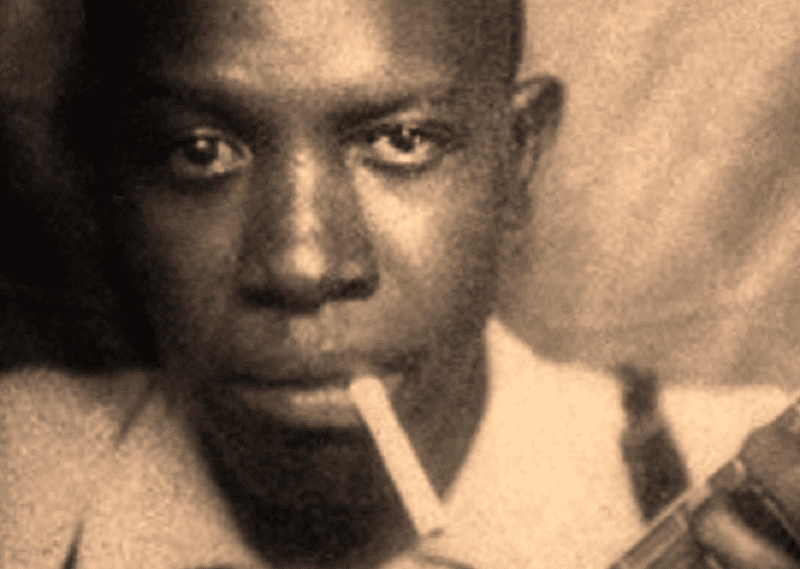 ReMastered: Devil at the Crossroads (2019), Netflix
ReMastered: Devil at the Crossroads (2019), Netflix
36. There Was A Third Photo
In 2013, the Johnson family came forward to announce forensic artist Lois Gibson had authenticated a third picture of the legendary bluesman. The photograph supposedly shows Johnson alongside his old touring partner, Johnny Shines. But although the Johnson estate endorsed the photograph, some experts remained unconvinced.
A team of 49 blues historians, academics, and biographers insisted that the man in the photograph could not be Robert Johnson. Based on the subjects’ clothing, historians dated the photograph to the 1940s, at least two years too late. But the clothes revealed a more interesting clue: All the buttons were on the left side…
37. …Or Not
Men’s clothing almost always features buttons on the right side—especially in Johnson's lifetime. "Backward" clothing is powerful evidence that someone doctored the photo. And, if you flip the photograph, then the man in the photo is really holding his guitar to the left. Sources confirm Johnson played his guitar in the traditional "right-handed" fashion. That third photo doesn't sound quite so "authentic" all of a sudden...
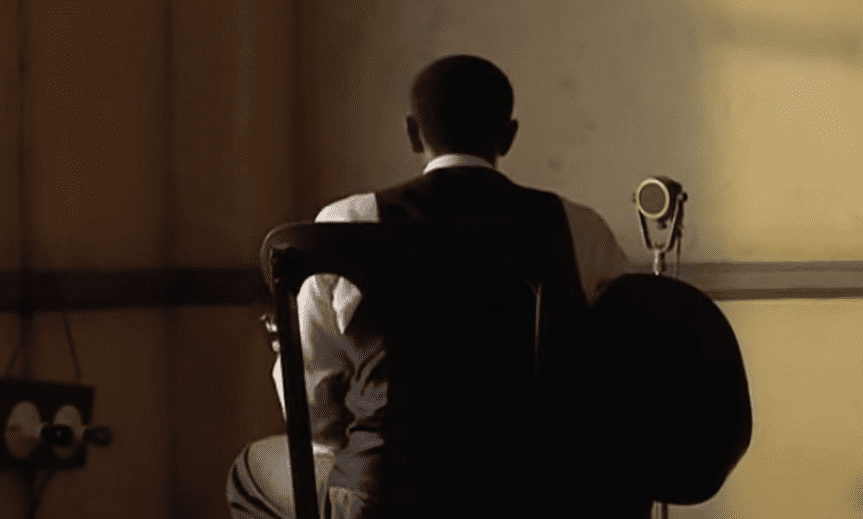 Crossroads (1986), Columbia Pictures
Crossroads (1986), Columbia Pictures
38. There Are A Lot Of Fakes
Finding new photographs of Robert Johnson has become something of a treasure hunt. Because photographic records of Johnson are so rare, a new picture could be worth a fortune. Several "new" photographs have arisen over the years; Lois Gibson, the Johnson family’s official authenticator, has even mistakenly verified a few of these.
Unfortunately, outside scrutiny often proves these to be fakes. Photographs previously approved by the Johnson family’s authenticator have depicted "Johnson" with such anachronisms as furniture not made until the 1940s and Coca-Cola bottles not used by the company until the late 1950s.
39. He May Have Had A Genetic Disorder
The scant photographic evidence of Robert Johnson was enough to give one doctor an insight into Johnson’s health. Citing his unusually long fingers and lazy eye, Dr. David Connell suggests that Johnson may have suffered from Marfan Syndrome, a genetic disorder which can lead to heart trouble—pretty appropriate for a bluesman.
40. The Karate Kid Was A Fan
Johnson’s mysterious life continues to loom large in popular culture. The subject of several documentaries, he also figures prominently in the 1986 movie Crossroads. In the movie, a Long Island guitar player—played by Karate Kid Ralph Macchio—idolizes Johnson and travels to Mississippi hunting for one of the legend's lost songs.
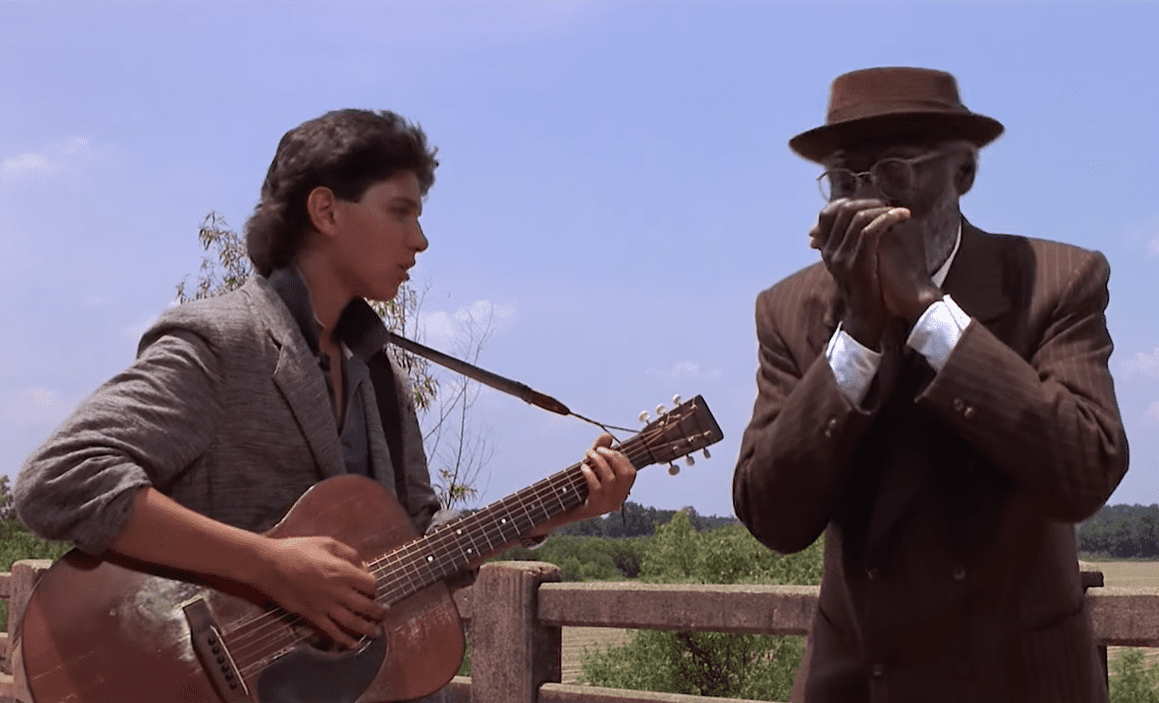 Crossroads (1986), Columbia Pictures
Crossroads (1986), Columbia Pictures
41. He Is A Comic Book Hero
Johnson even has his own comic book—a Japanese manga named Me and the Devil Blues after one of Johnson’s songs. Written by illustrated by Akira Hiramoto, Me and the Devil Blues tells a fantastical version of Johnson’s life story and was a critical success, winning the 2009 Glyph Award for Best Reprint.
42. He Rests In The Blues…
For close to 60 years, Robert Johnson’s body lay in an unmarked plot near Quito, Mississippi. When one Atlanta rock band, devotees of Johnson’s music, discovered this, they donated enough money to buy a small marker that reads: "Robert Johnson, Resting in the Blues". That band—fittingly enough—was called the Tombstones.
43. …But No One Knows Where
Some debate remains, however, over Johnson’s true burial place. Some say he is buried under a pecan tree in Greenwood, Mississippi, while a cenotaph in Johnson’s honor stands in the Mount Zion Baptist Church cemetery in nearby Morganville. All anyone can say for certain is that Robert Johnson rests in Mississippi. Probably.
44. There Was Only One Robert Johnson. We Think.
The confusion around Johnson’s final resting place raises a question: What if there was more than one Robert Johnson? Far-fetched, maybe, but historians point out that blues musicians often "borrowed" the names of more famous performers. Johnson himself sometimes claimed to be a popular guitarist named Lonnie Johnson.
In the murky, mythic world of the delta blues, real truths are hard to come by. The men and women who carried the blues up and down the Mississippi River were boastful, inventive, and eager to entertain—none more so than the man we call Robert Johnson. It’s only right, then, that he remains as mysterious in death as he was in life.
45. He Went Out Quietly
No autopsy was ever performed on Johnson, and his passing never made the papers (indeed, many blues fans in the north were not aware of it until 30 years later). Johnson’s past was dark and mysterious, and with no obvious cause, rumors began to swirl. It seemed to many as if the hellhound on Robert Johnson’s trail had finally caught up with him. But the truth is likely even darker.
46. He May Have Met With Foul Play
Had the devil finally come to collect his debt? It certainly seemed that way. But those close to Johnson had an earthlier explanation. According to witnesses, Johnson ended the evening of the dance flirting with a local woman. It seemed like an innocuous encounter—but it would prove fatal. What Johnson did not know was the woman was married to a jealous-minded man.
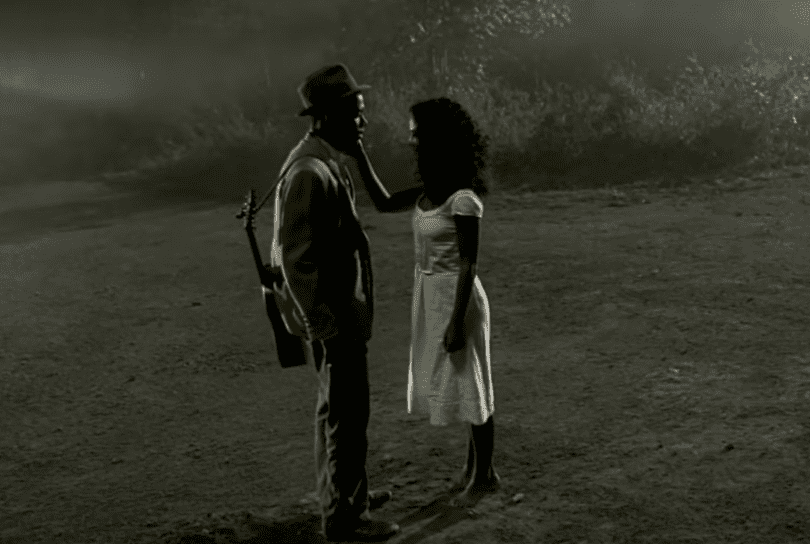 Supernatural (2005-2020), The CW
Supernatural (2005-2020), The CW
47. His Friend Tried To Save Him
Sonny Boy Williamson I happened to be at the dance that night. He claimed he saw the man put something in Johnson’s drink. Williamson tried to stop Johnson from drinking the tainted beverage only to be scolded: "Man, don’t ever knock a bottle out of my hand," Johnson growled, before taking a drink. Three days later, he was gone.
48. The Cause Might Be Under Your Nose
Johnson allegedly spent his last three days in agony. Historians have tried to ascertain the cause, based on eyewitness reports. Strychnine was ruled out—Johnson could not have missed the distinct taste and its fast-acting effects—but the symptoms might suggest a more common cause, one found in almost every home in the south.
 Wikimedia Commons, Wellcome Images
Wikimedia Commons, Wellcome Images
49. He Had Really Bad Luck
Naphthalene is a common element found in mothballs. Dissolved in a drink, it is mostly flavorless and has the power to leave the victim sick for several days. It is seldom fatal, unless the victim is suffering ulcers. Ulcers would have exacerbated the effects of the poison—resulting in a very unlikely, but very painful, end. And one can imagine that a hard drinker such as Johnson had ulcers.
50. No One Knows Who Did It
The identity of Johnson’s supposed poisoner was never revealed. Musicologist Robert McCormick claimed to have spoken with a man who confessed to committing the act, but McCormick refused to disclose the man’s identity. As such, there’s no way to investigate McCormick’s claims, let alone the confession he supposedly obtained.
Sources: 1, 2, 3, 4, 5, 6, 7, 8, 9., 10, 11, 12, 13, 14, 15, 16, 17, 18


